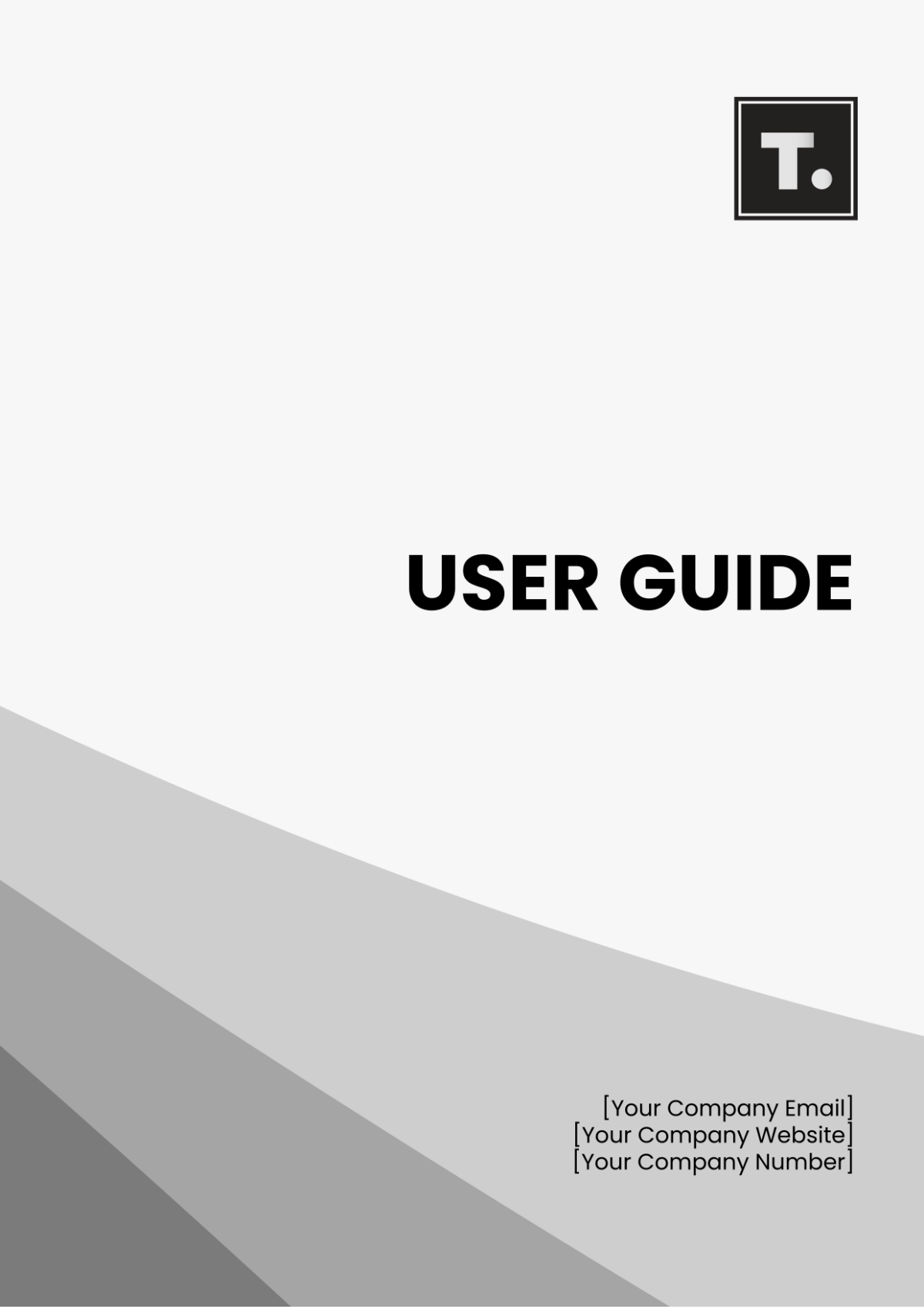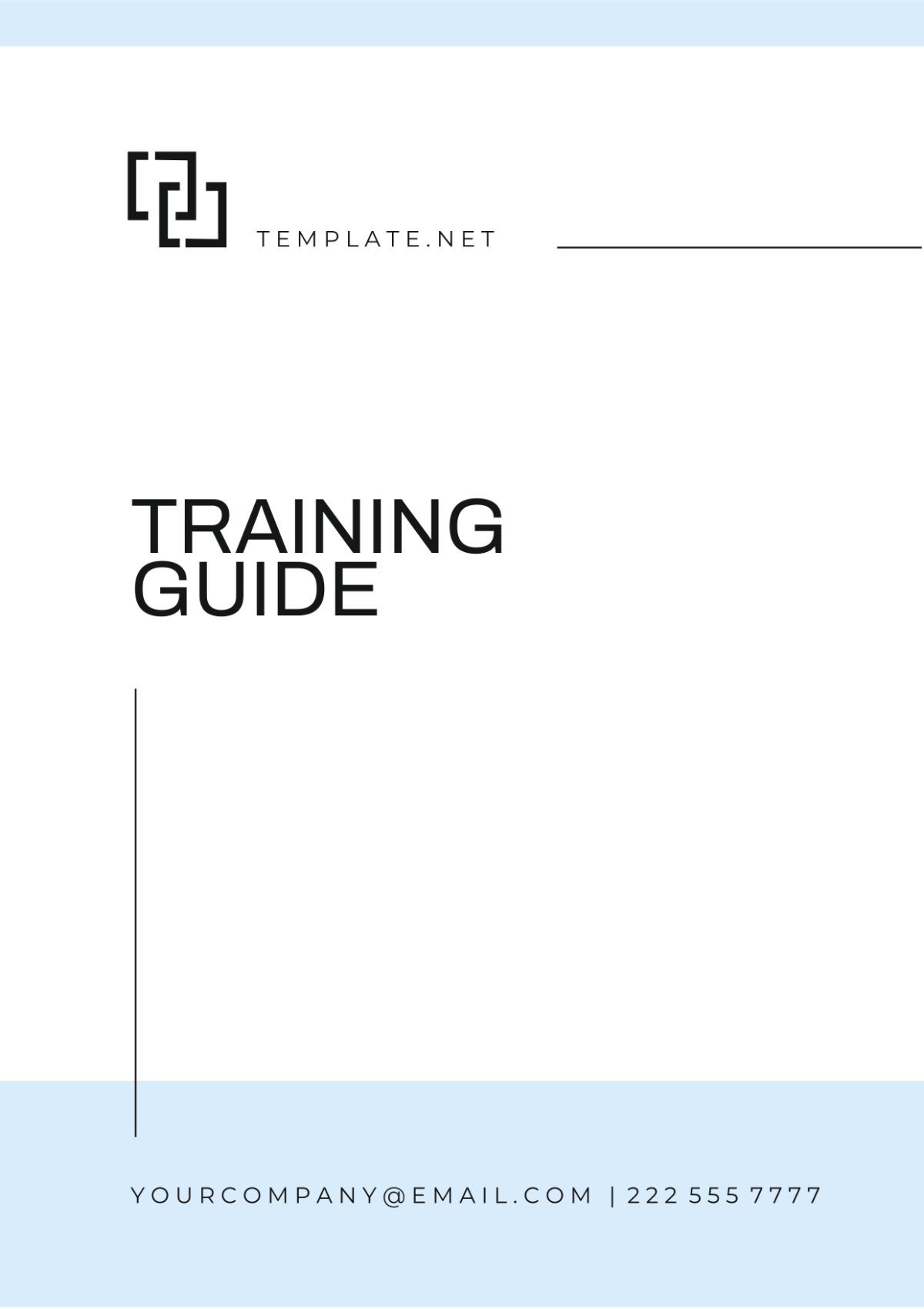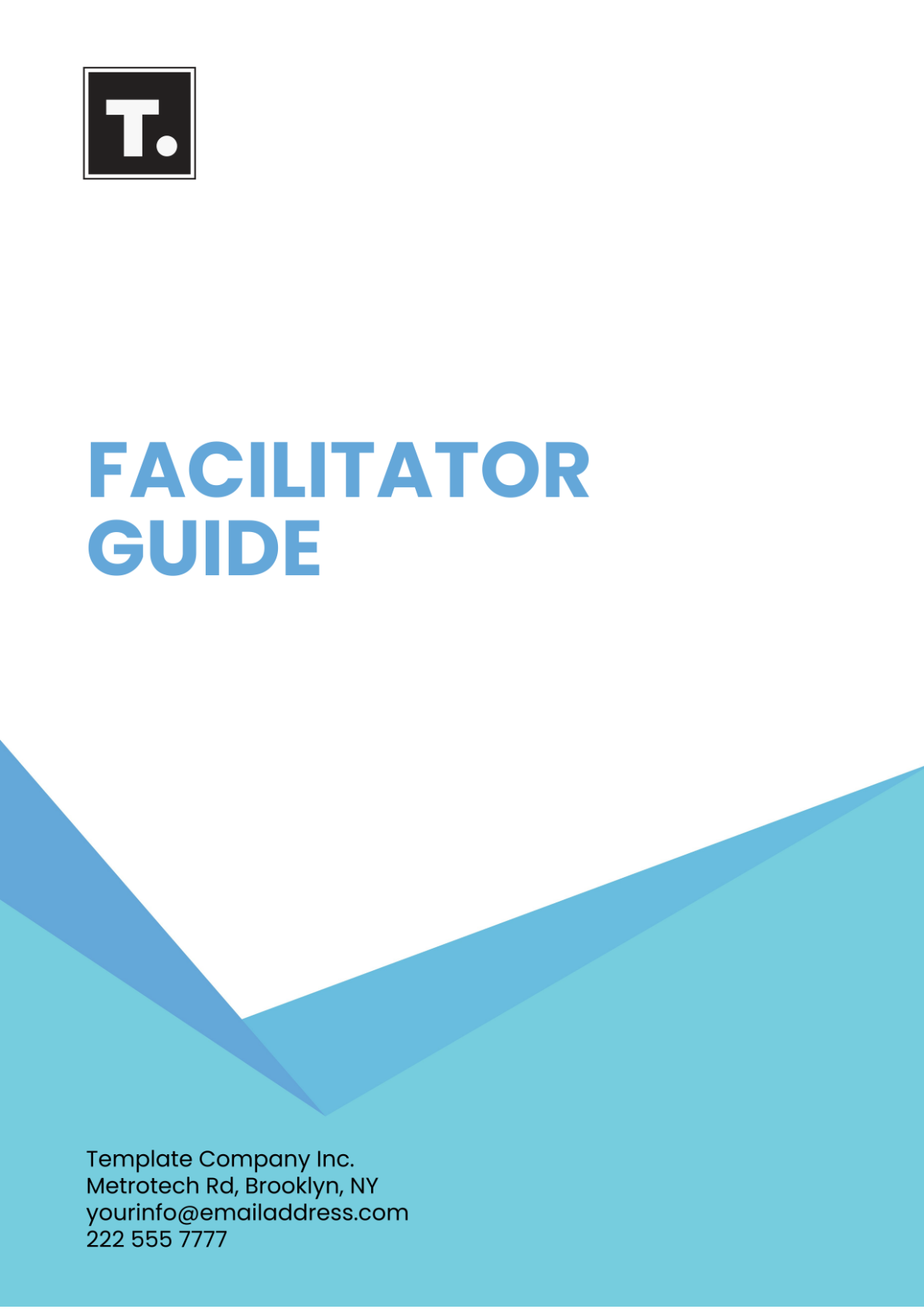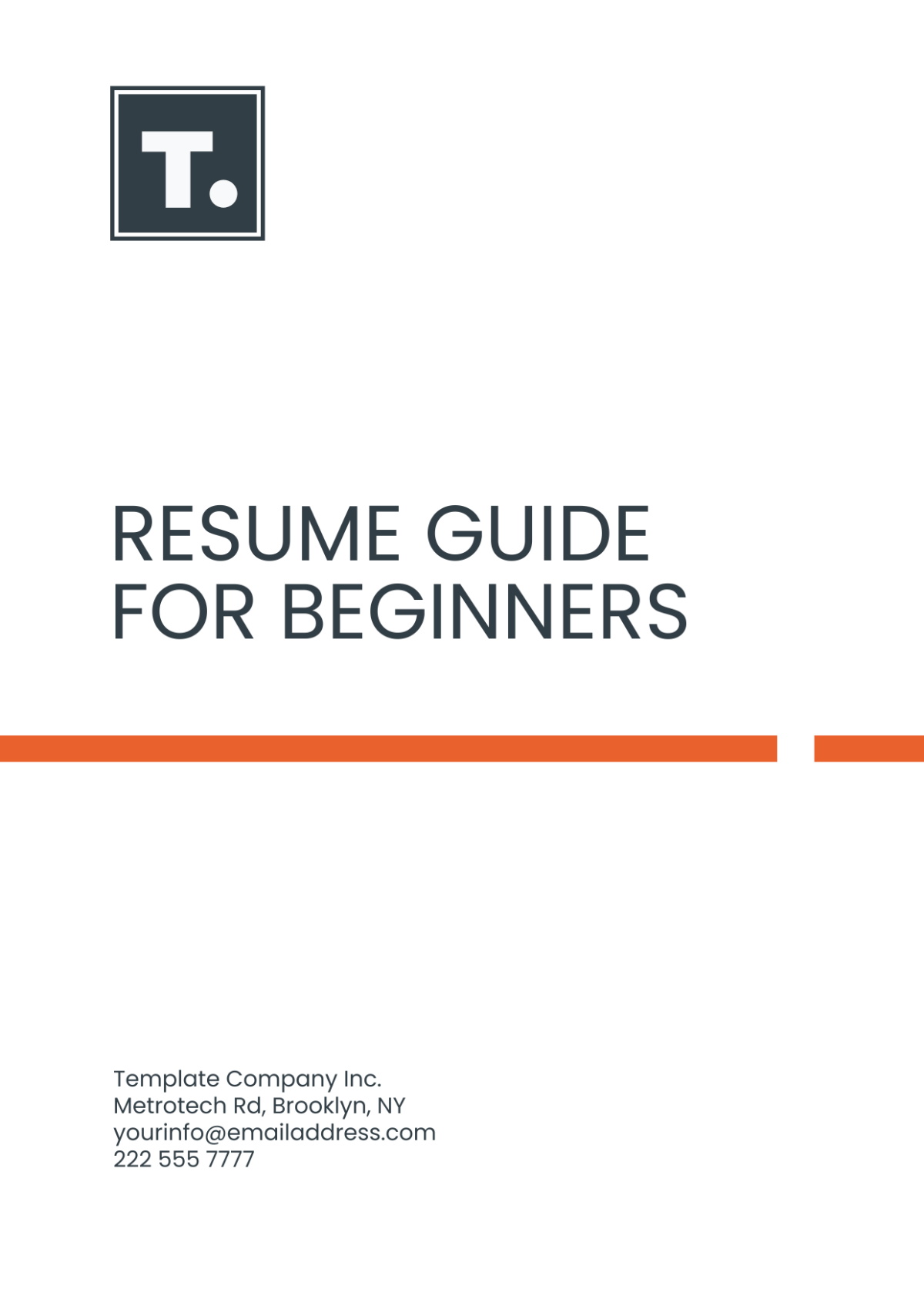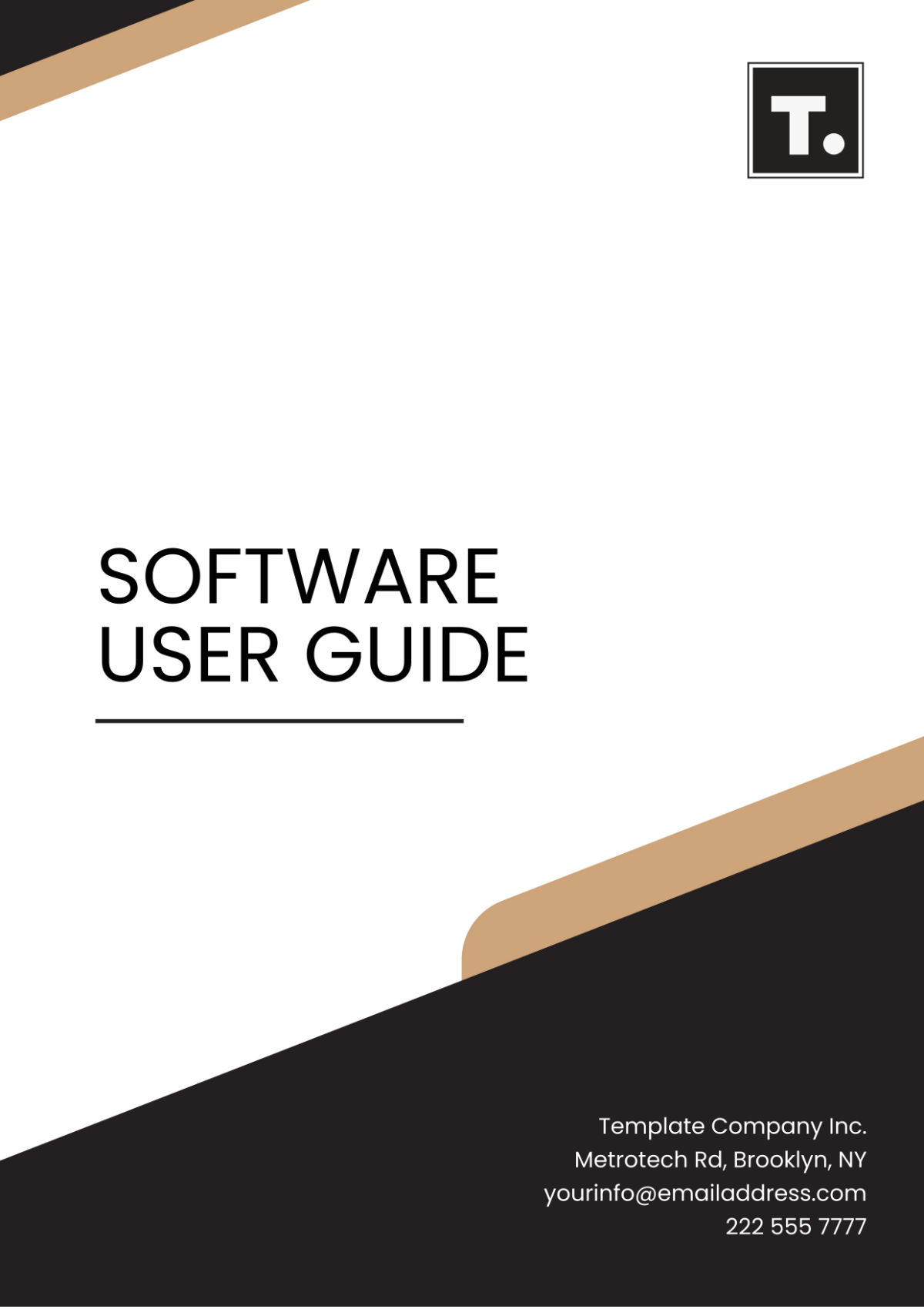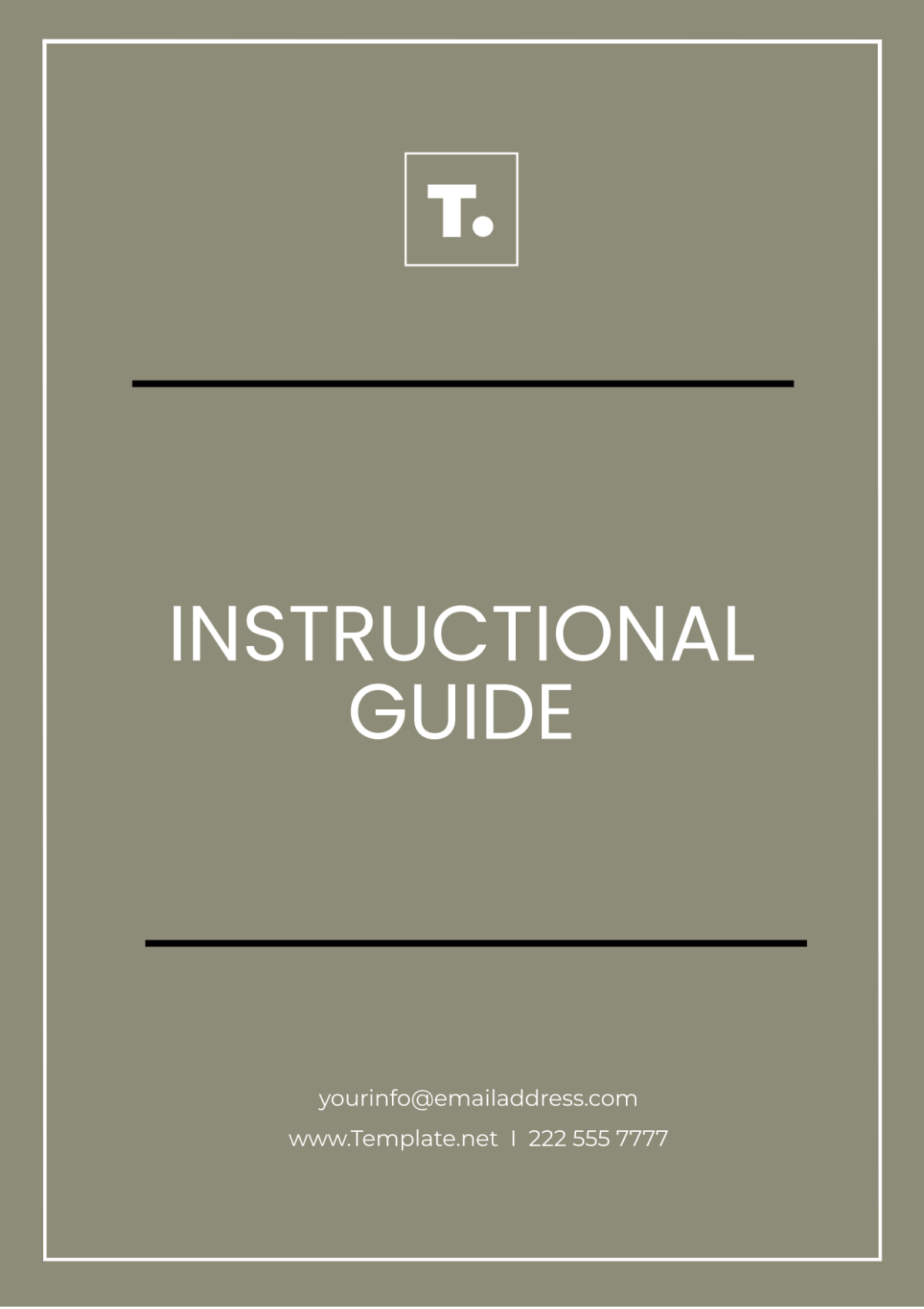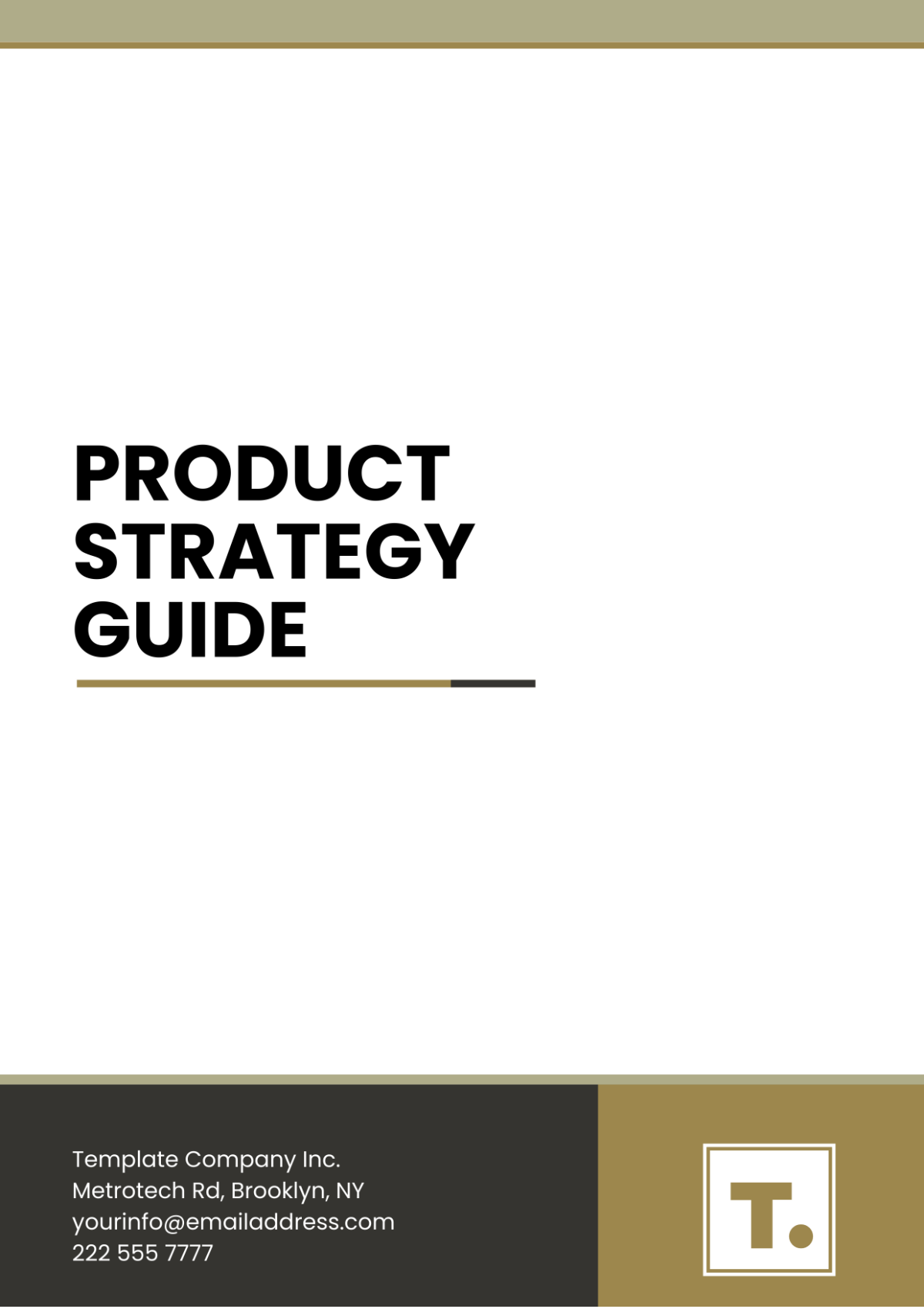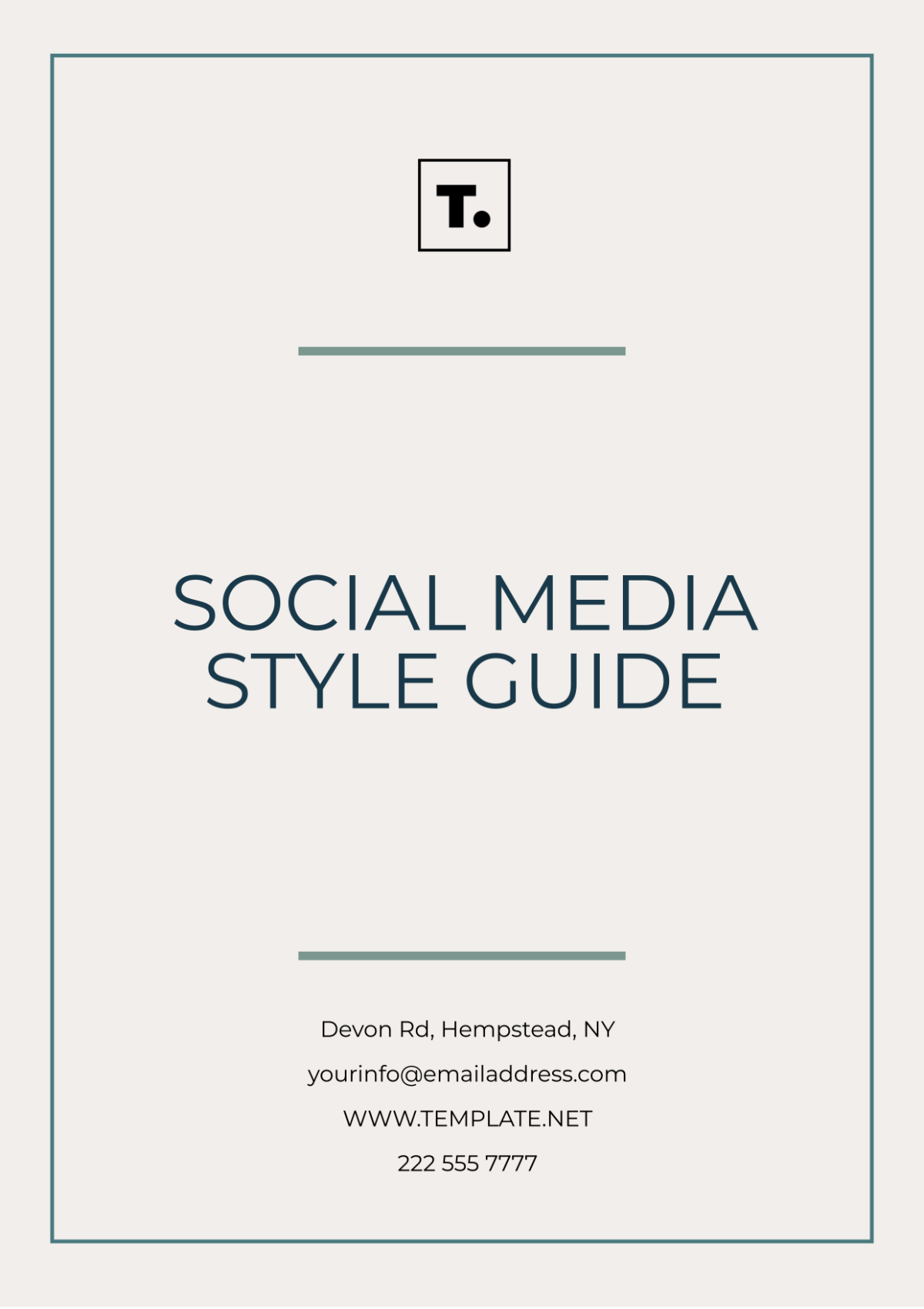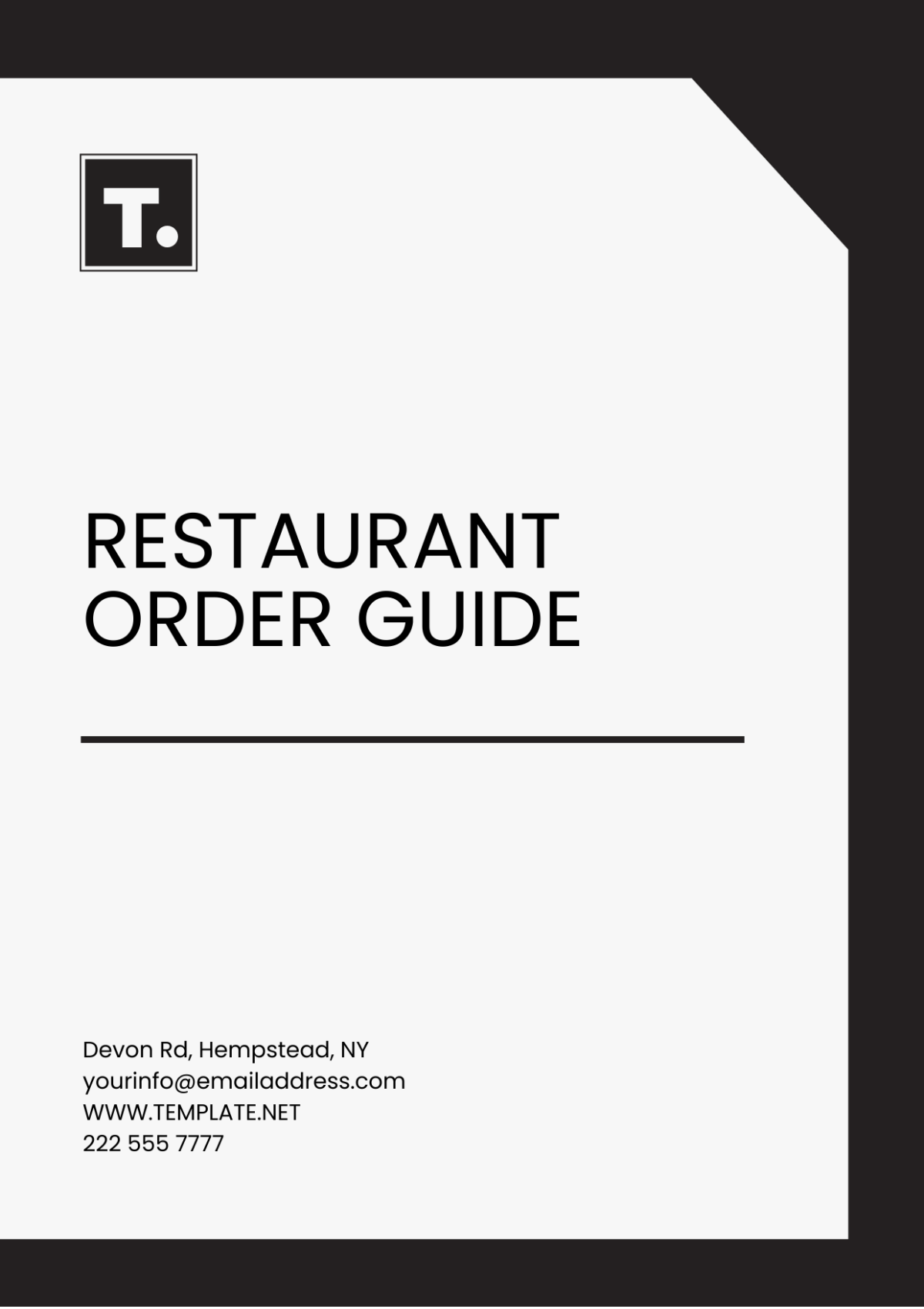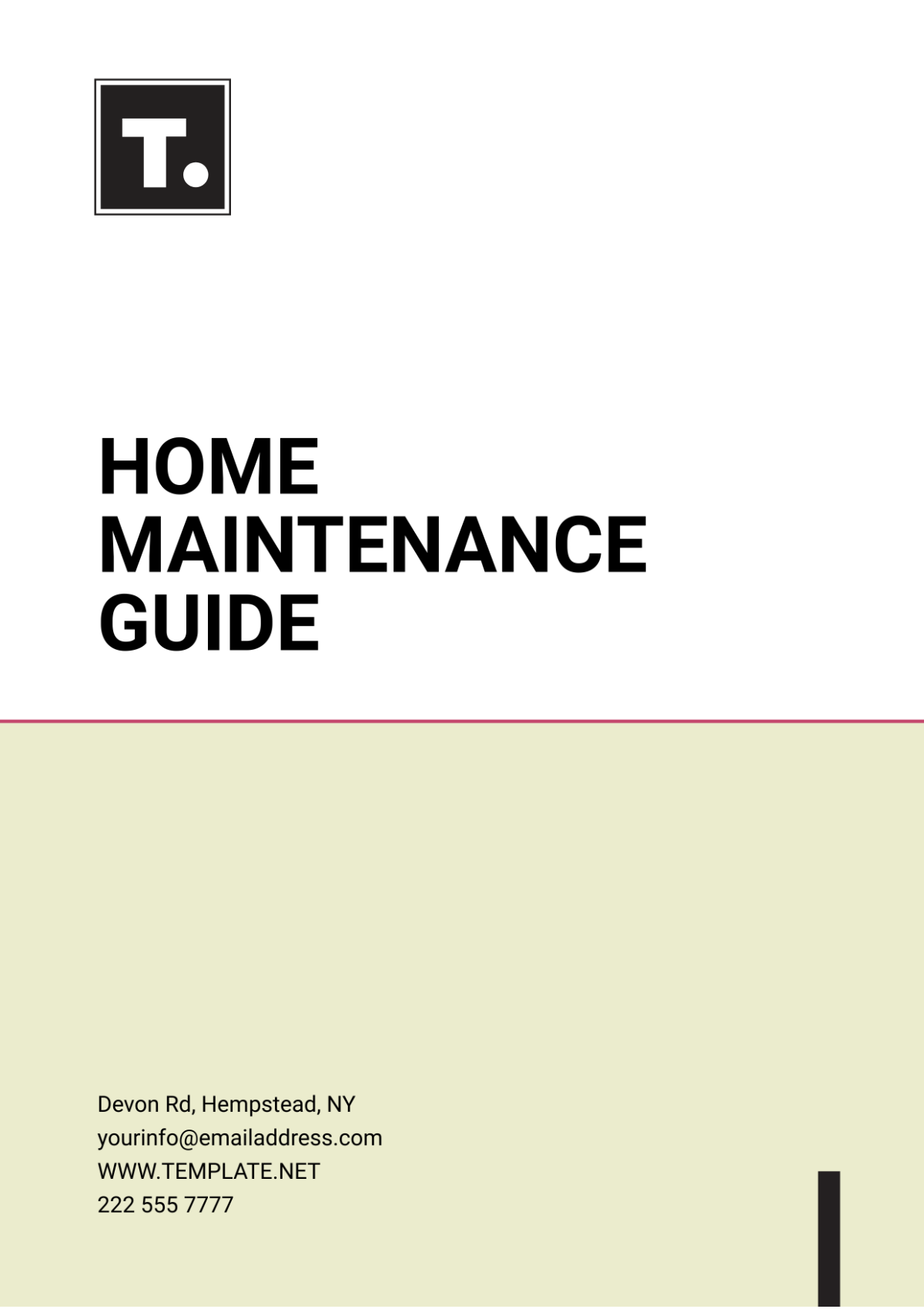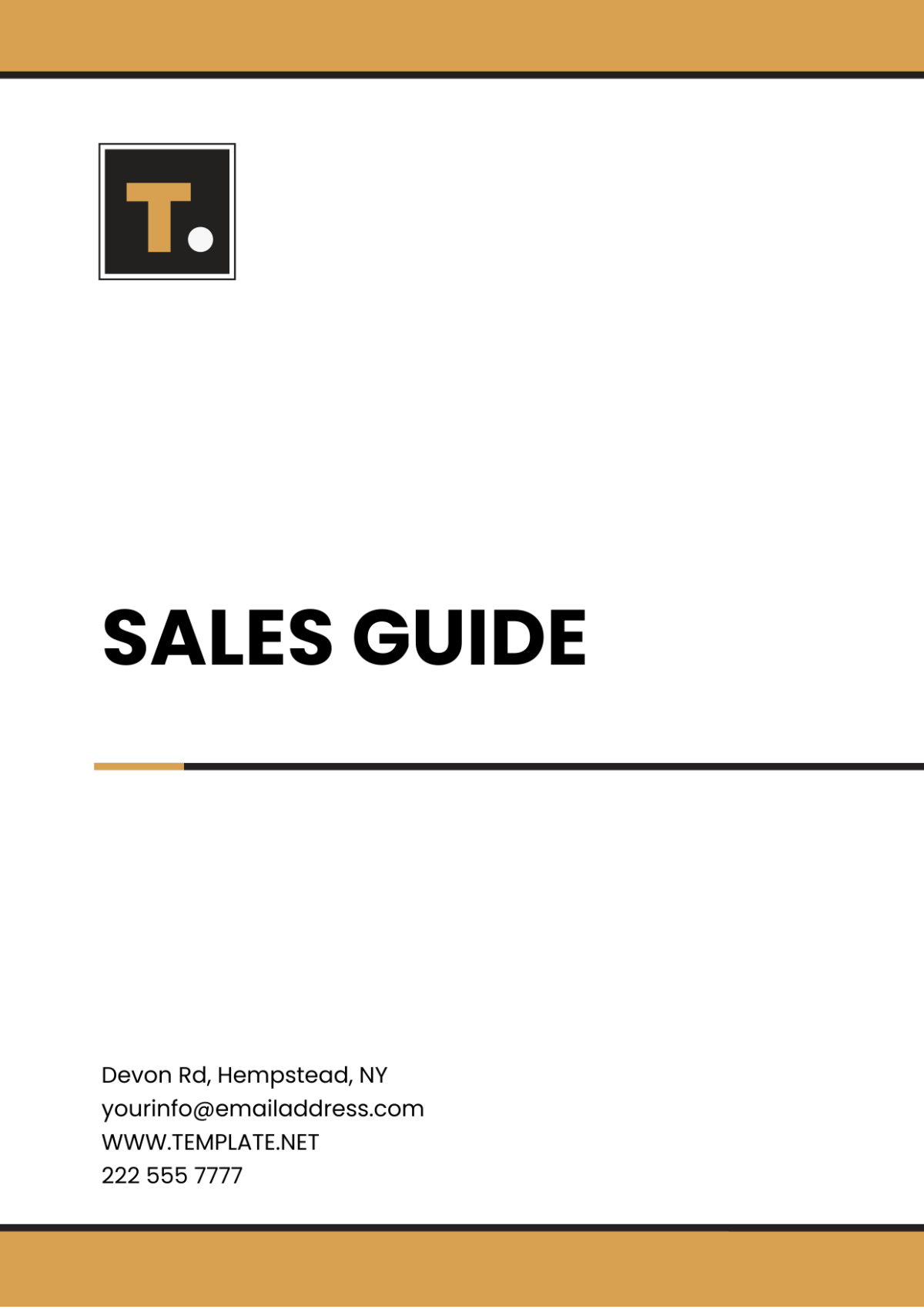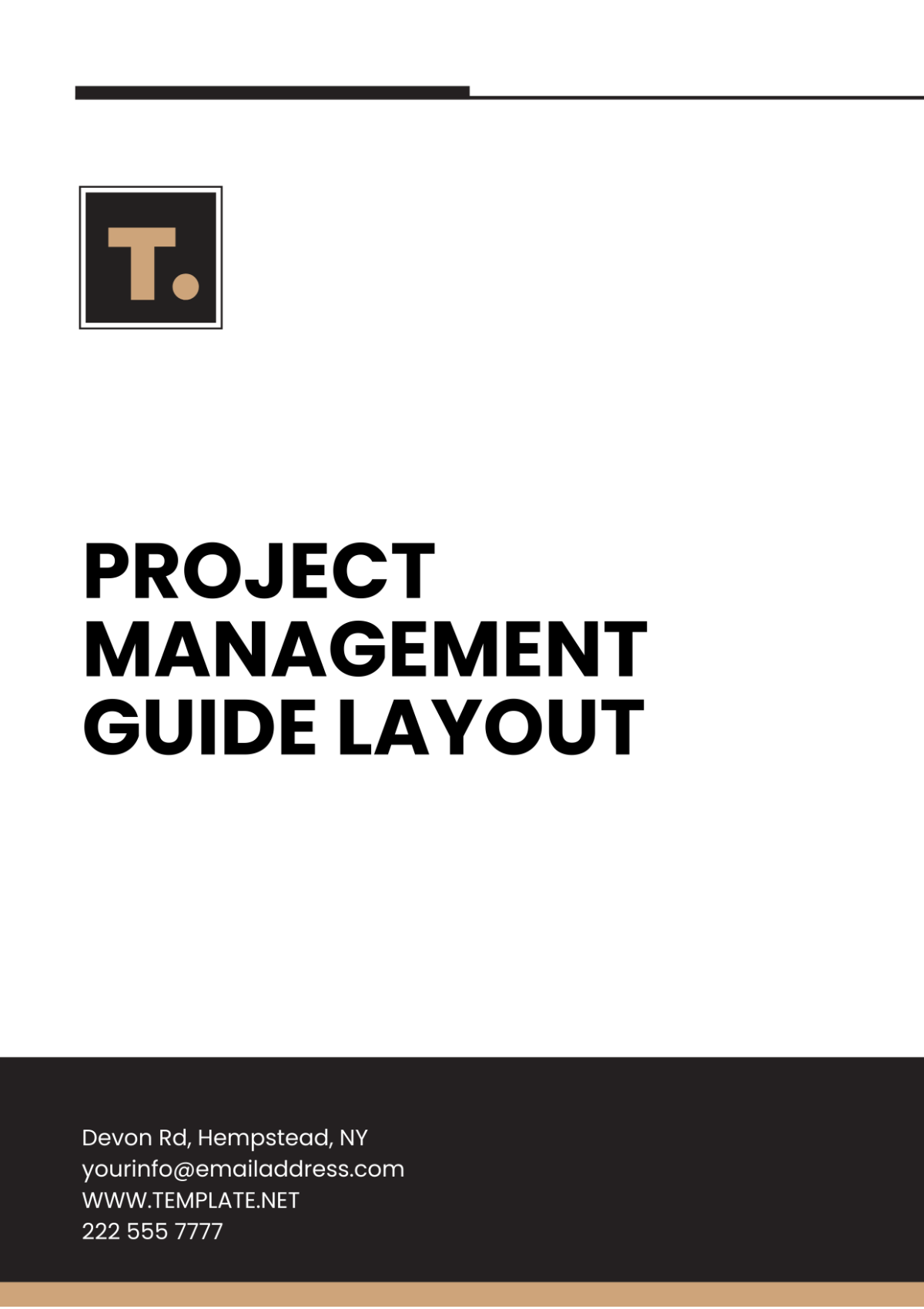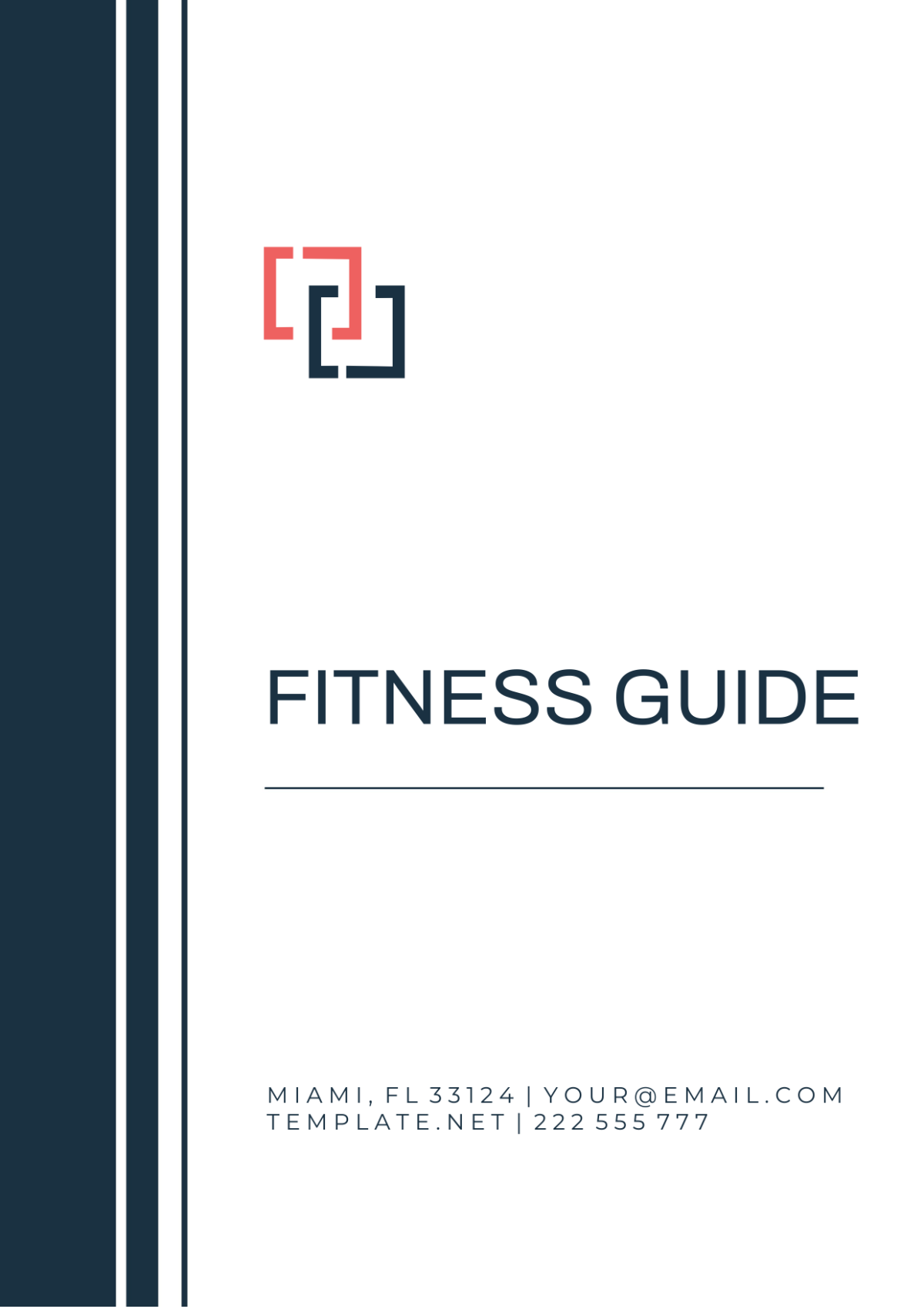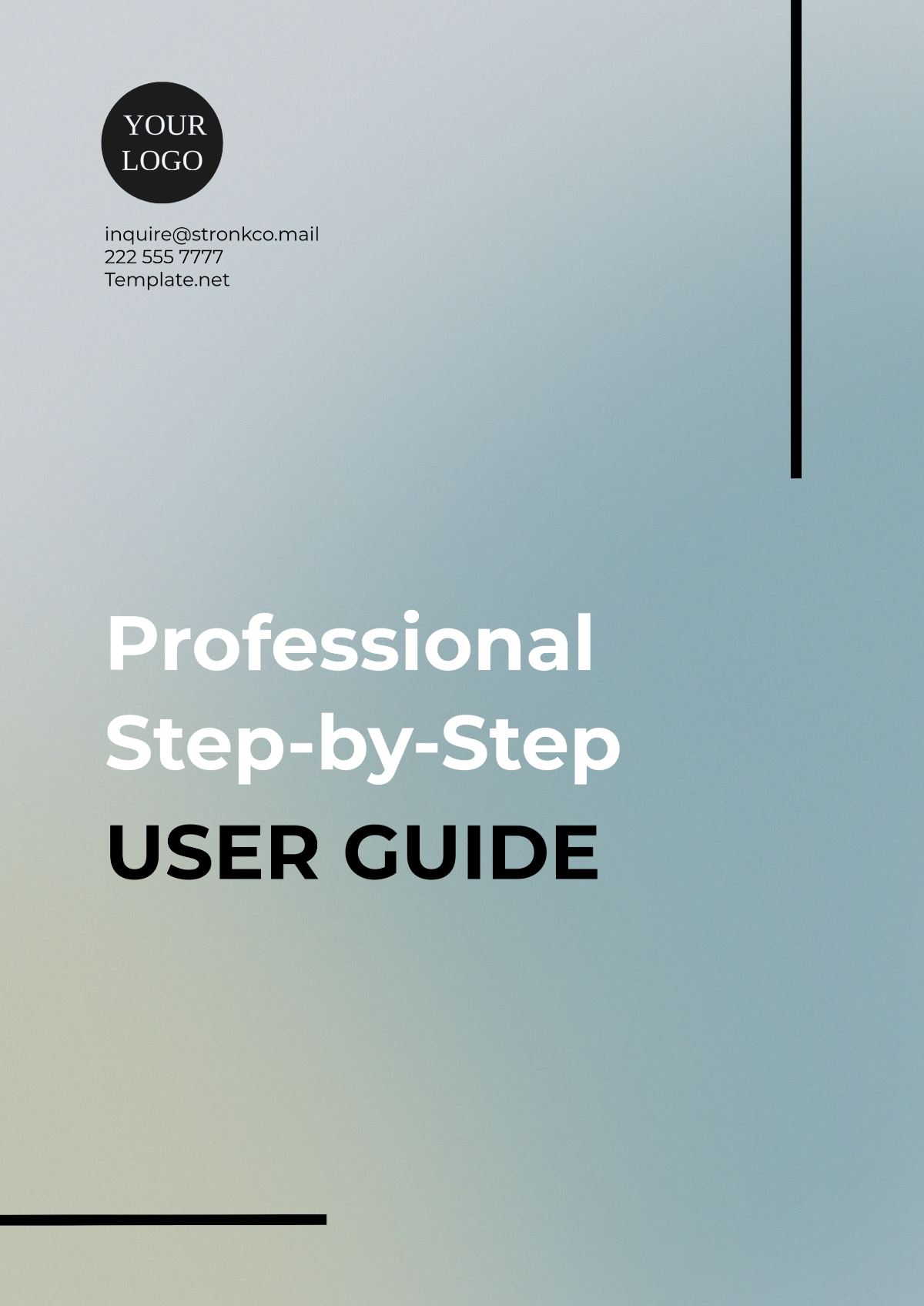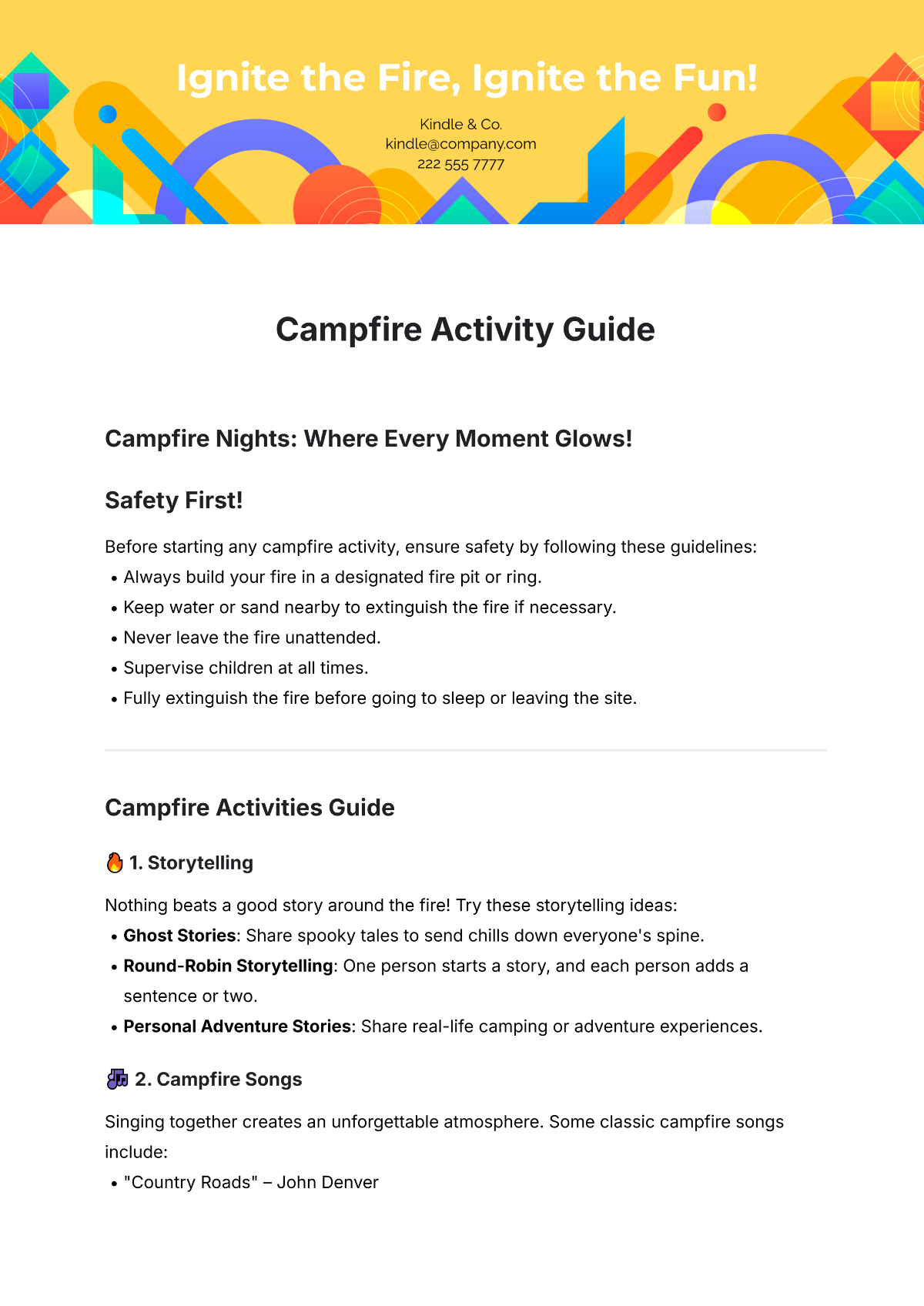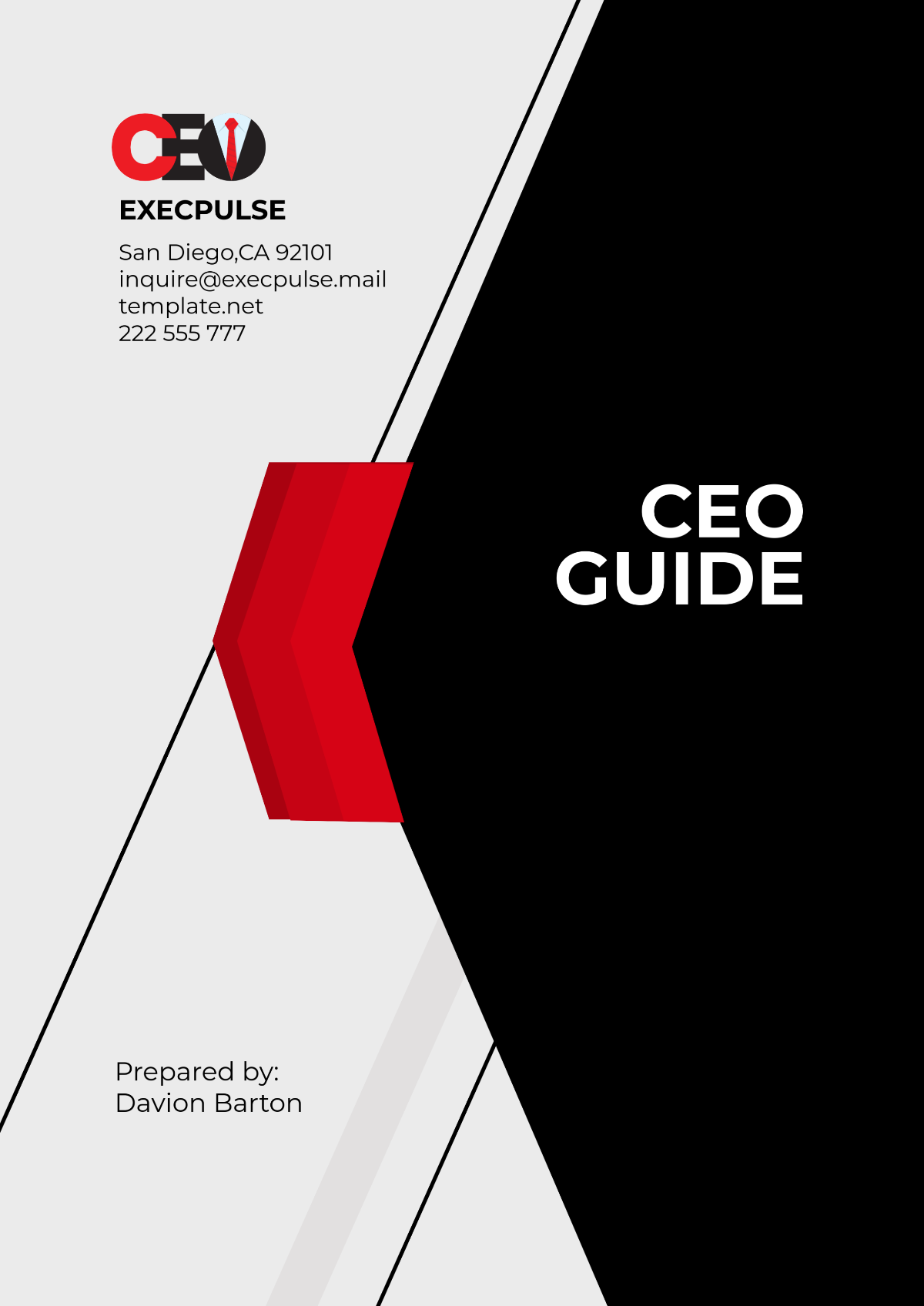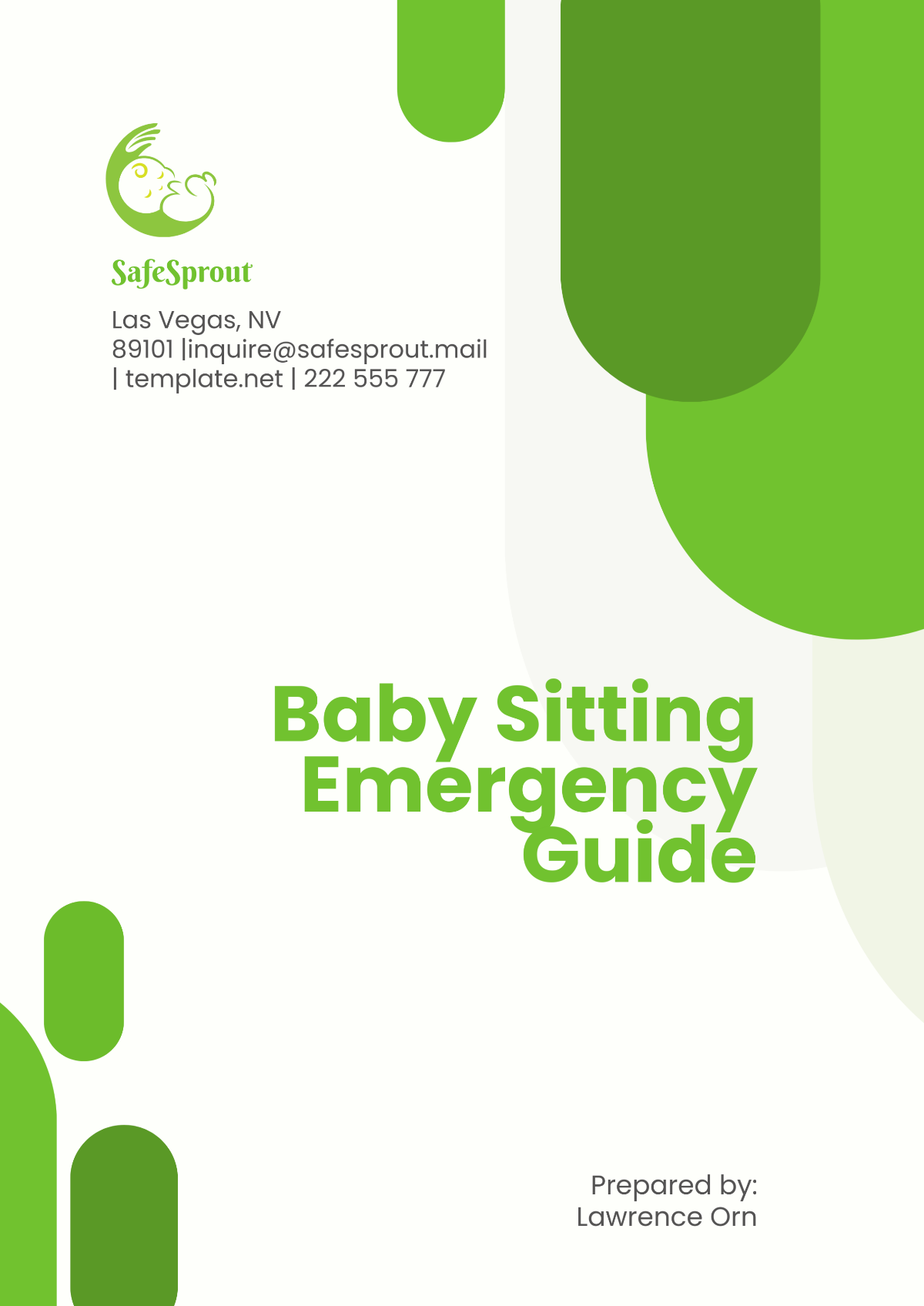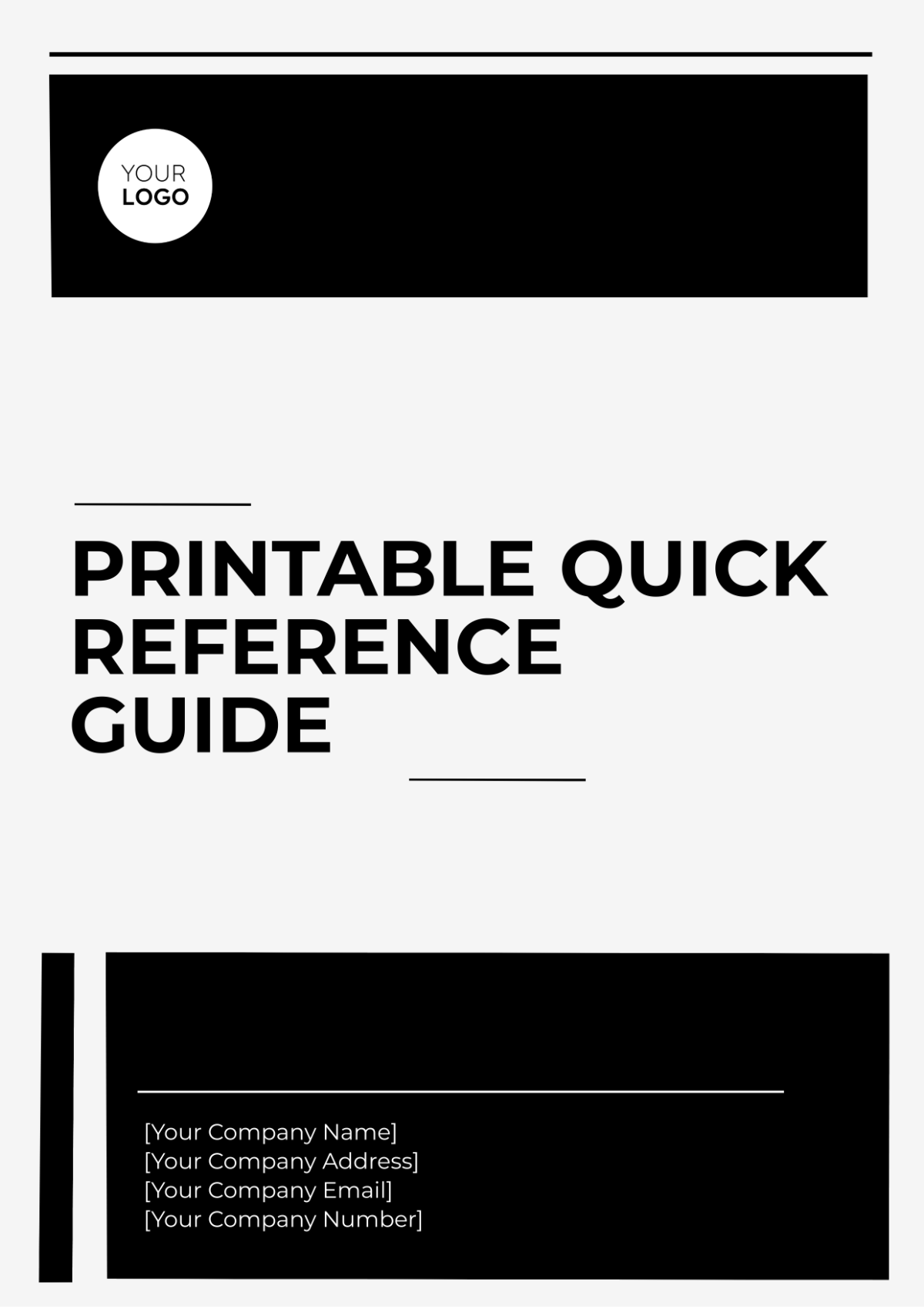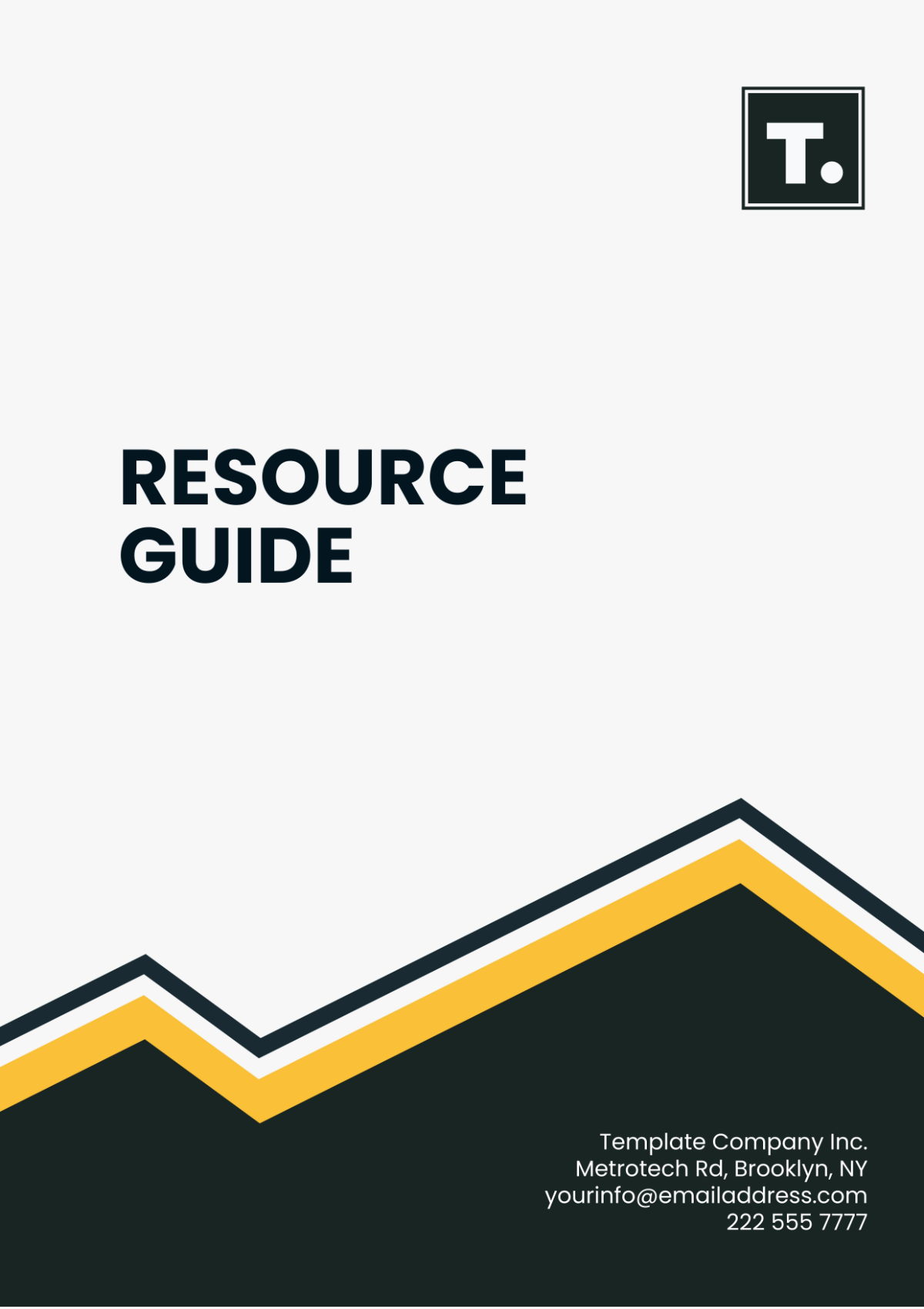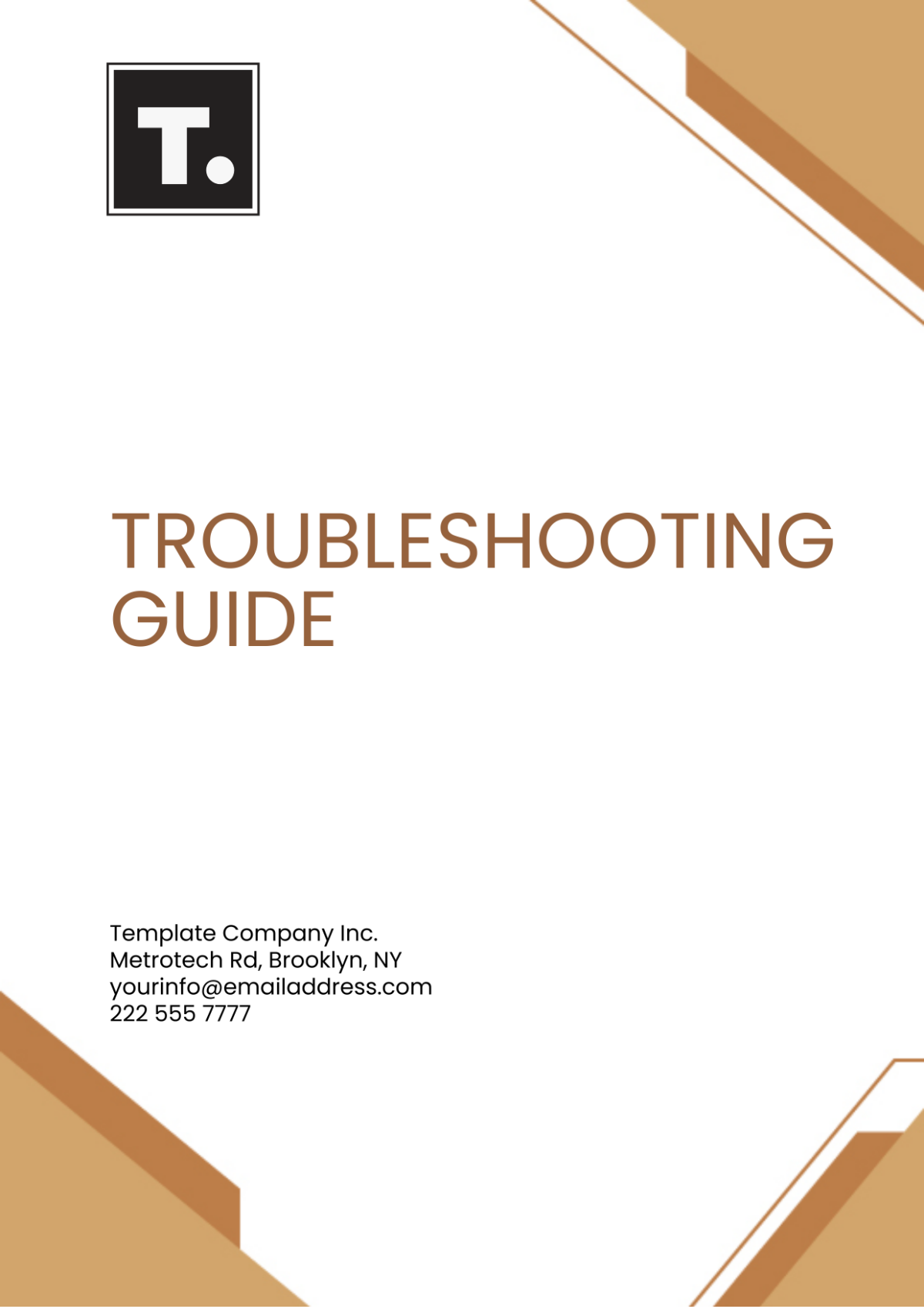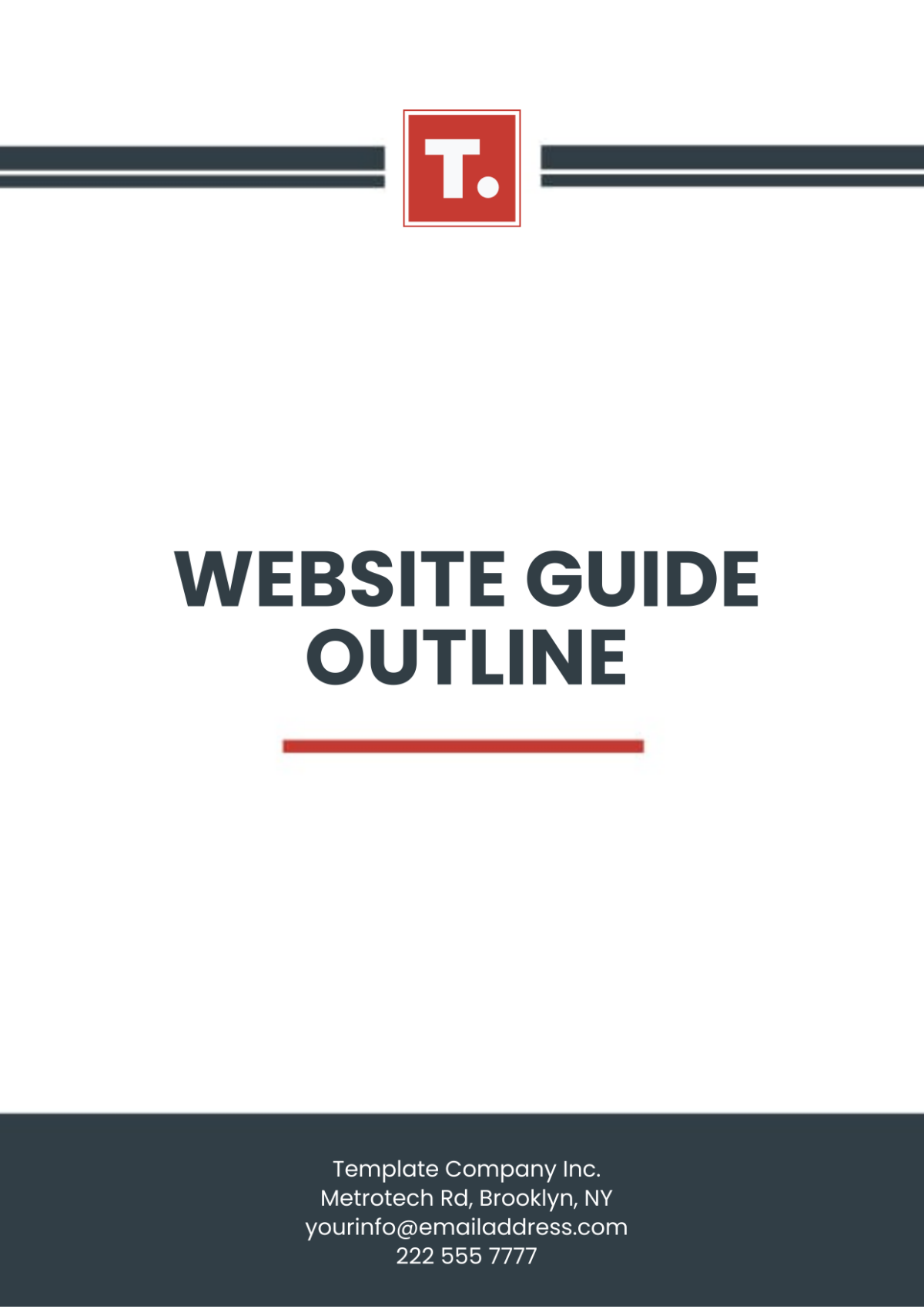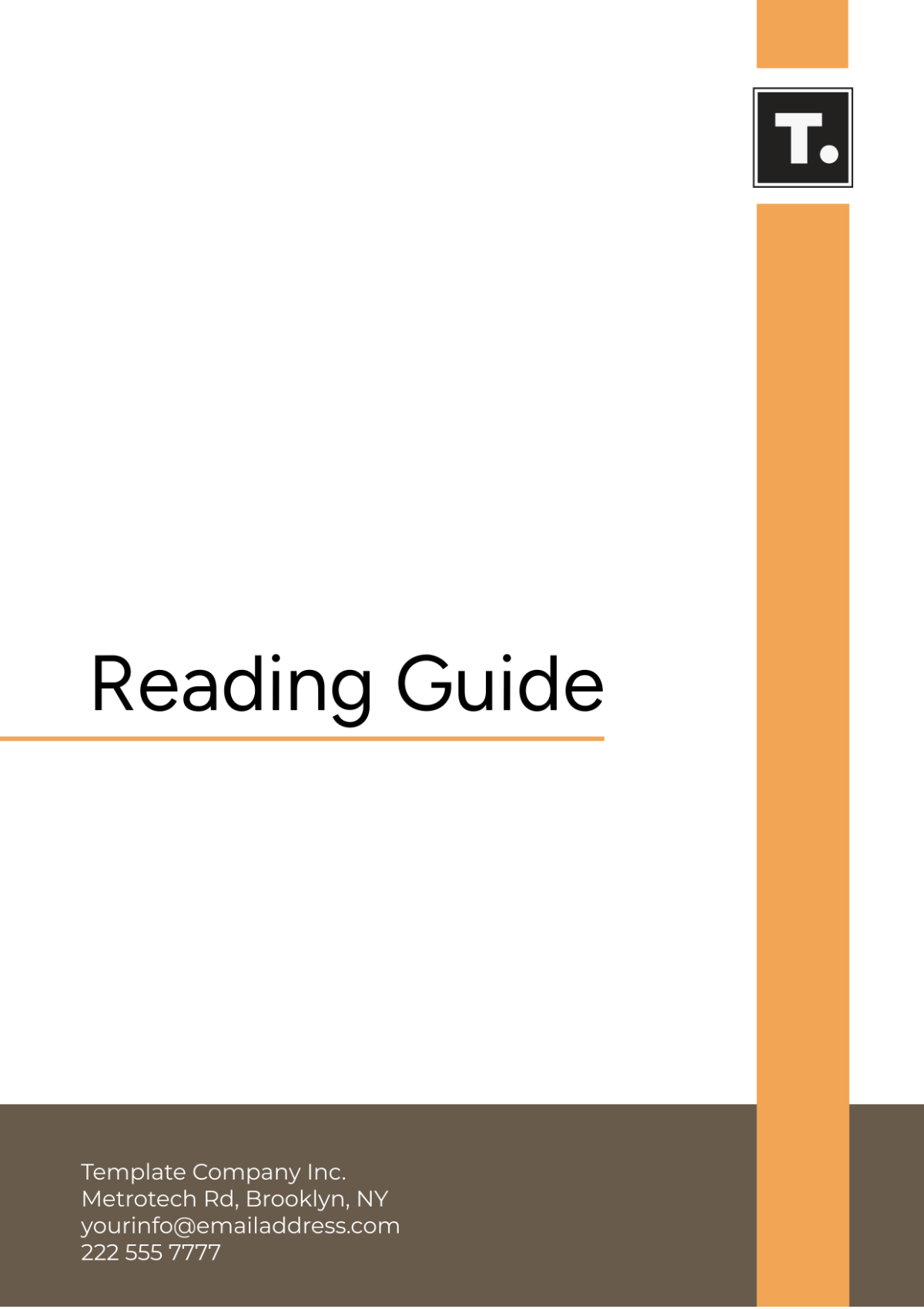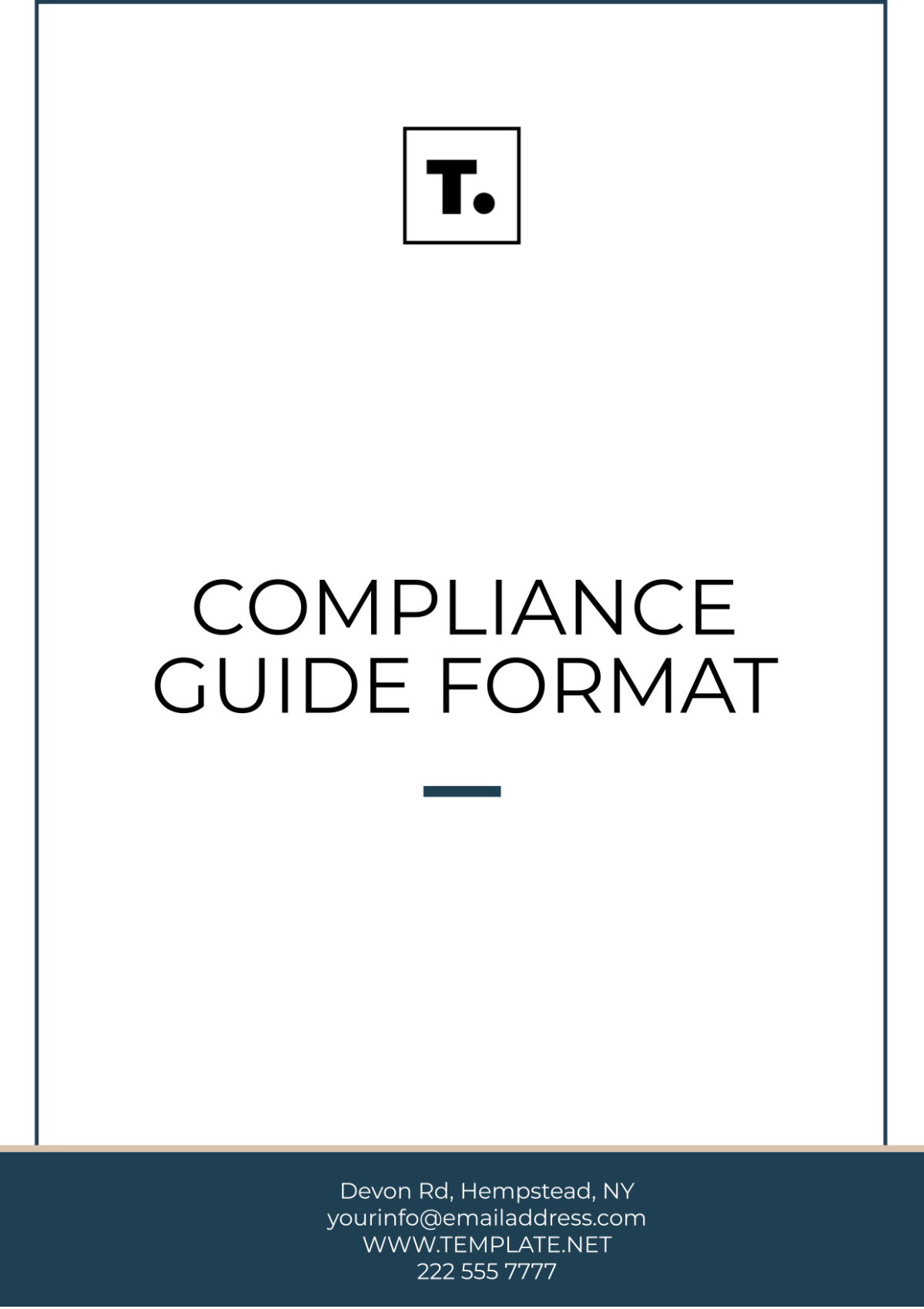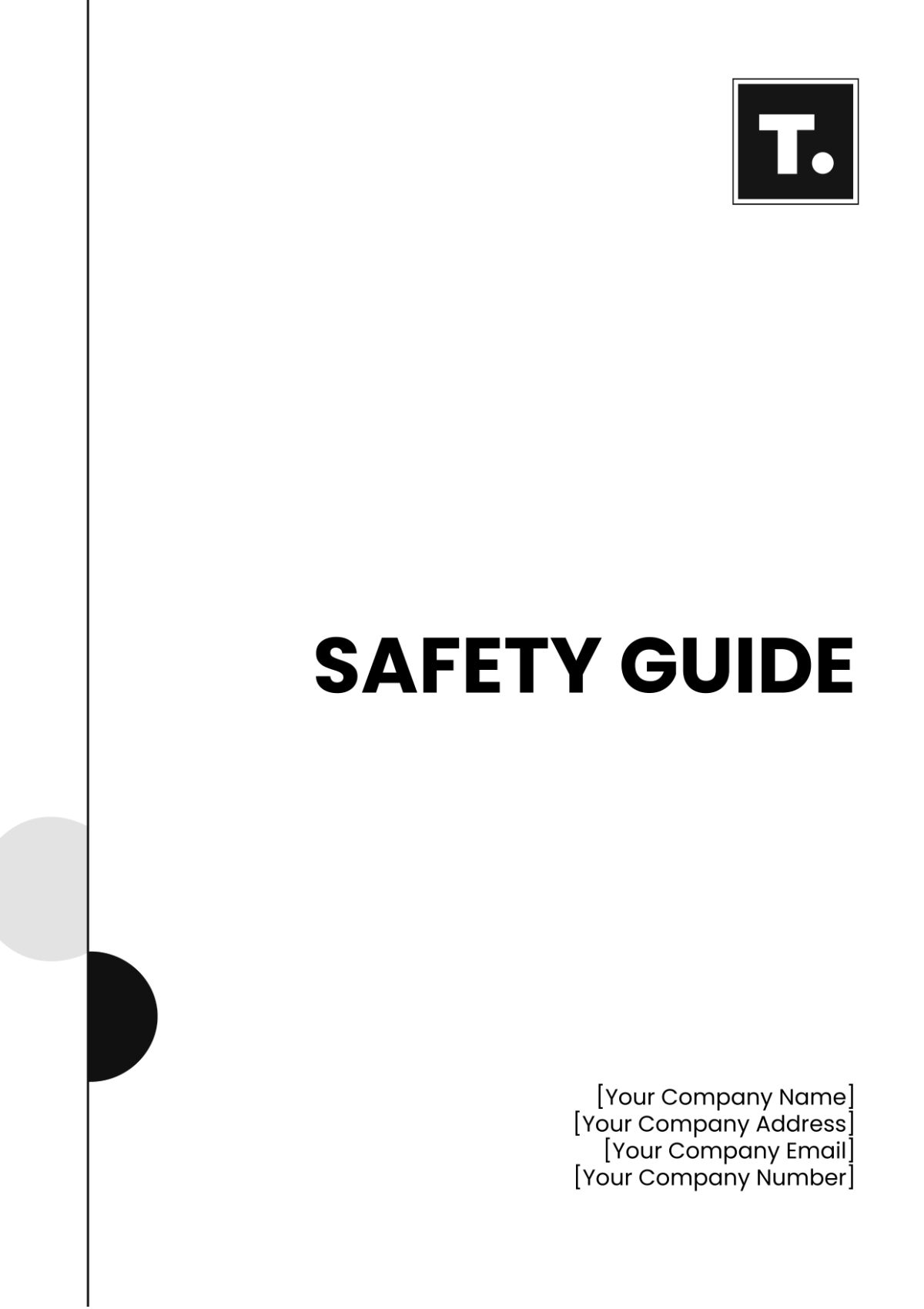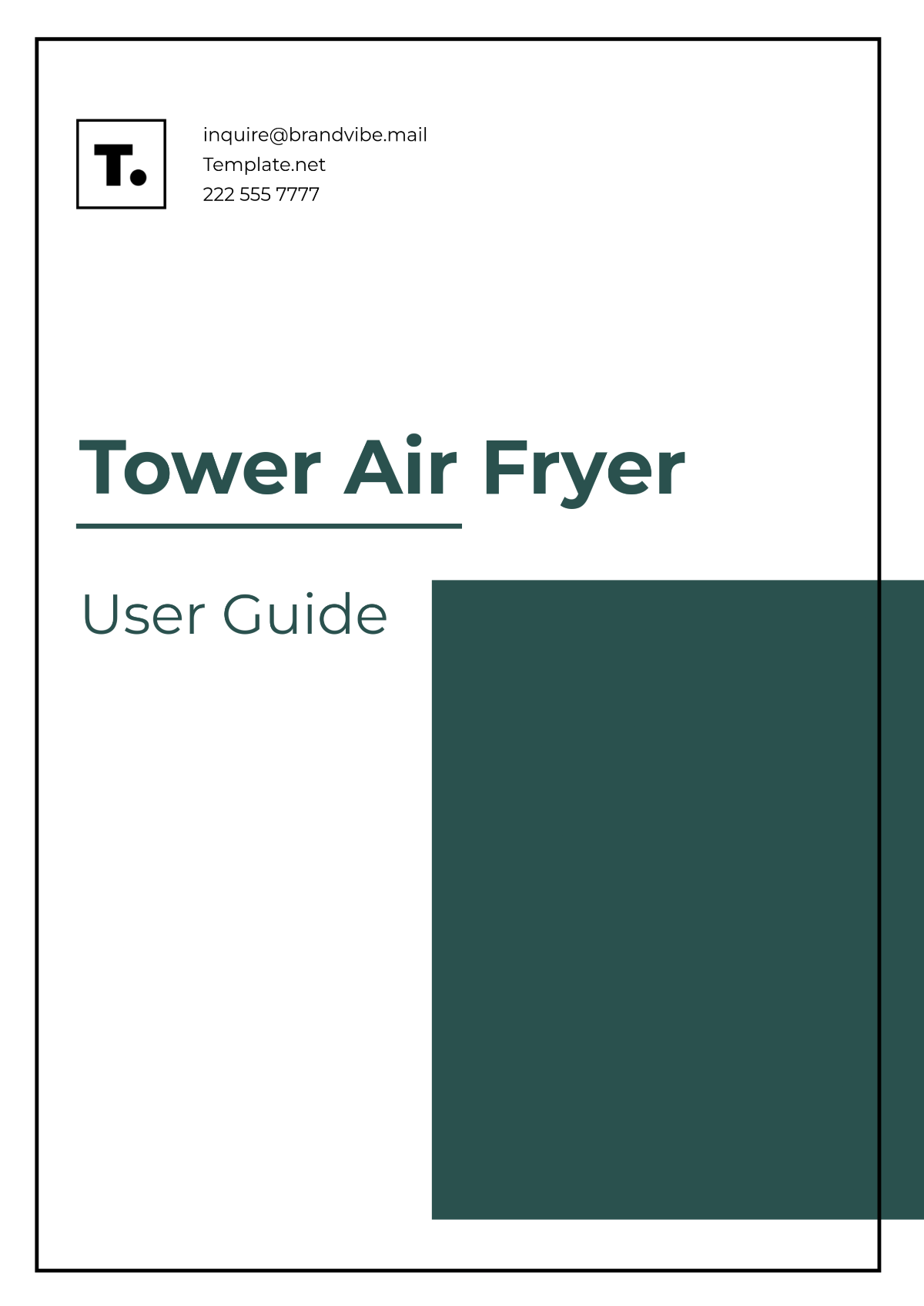Cafe Training Guide
I. Introduction to [Your Company Name]
Welcome to [Your Company Name], where we take pride in our rich history, unwavering commitment to sustainability, and dedication to delivering an exceptional customer experience. Our cafe is not just a place for coffee; it's a hub for community engagement and a platform for showcasing the finest in culinary innovation. We believe in the power of teamwork and collaboration, recognizing that our collective efforts are the cornerstone of our success.
Our mission is simple yet profound: to create a welcoming environment where every guest feels valued, and every cup of coffee tells a story. We strive to be more than just a cafe; we aim to be a destination where people come together, share moments, and create memories. Our values of integrity, excellence, and passion are at the core of everything we do, guiding us as we serve our community and strive for excellence in all aspects of our operations.
As a member of our team, you play a crucial role in upholding these values and delivering on our promise of exceptional customer service. We believe that by working together, we can achieve greatness and create experiences that will leave a lasting impression on our customers. Welcome to [Your Company Name], where every cup is brewed with passion and served with pride.
II. Health and Safety Standards
This section covers essential health and safety protocols, including hygiene practices, emergency procedures, and workplace safety rules. It ensures all employees understand how to maintain a safe and compliant environment for both staff and customers. Detailed instructions on proper food handling, sanitation routines, and the use of personal protective equipment (PPE) are provided to prevent accidents and ensure compliance with health regulations.
A. Hygiene Practices
Maintaining high standards of hygiene is crucial in ensuring the safety and well-being of both our customers and staff. Proper hygiene practices help prevent the spread of germs and bacteria, reducing the risk of foodborne illnesses and other health hazards. This section outlines the specific hygiene practices that all employees must follow to uphold these standards.
Hygiene Practices | Description |
|---|---|
Handwashing | All employees must wash their hands regularly, especially before handling food, after using the restroom, and after handling money. Proper handwashing techniques include using soap and warm water for at least 20 seconds. |
Food Preparation | Food must be prepared in a clean and sanitary environment. This includes wearing gloves when handling food, using clean utensils and equipment, and avoiding cross-contamination between raw and cooked foods. |
Personal Hygiene | Employees must maintain good personal hygiene, including keeping hair tied back, wearing clean uniforms, and avoiding touching their face or hair while working. |
Cleaning and Sanitizing | Surfaces, utensils, and equipment must be regularly cleaned and sanitized to prevent the spread of germs and bacteria. This includes using approved sanitizers and following proper cleaning procedures. |
B. Emergency Procedures
In the event of an emergency, quick and decisive action can save lives. This section details the emergency procedures that all staff must be familiar with, including fire safety protocols, medical emergency response, and evacuation procedures. By being prepared and knowing how to respond effectively, we can minimize the impact of emergencies and ensure the safety of everyone in our cafe.
Emergency Procedures | Description |
|---|---|
Fire Safety | In the event of a fire, employees must evacuate the building immediately and assemble at the designated meeting point. Fire extinguishers and fire alarms must be easily accessible and in working condition. |
Medical Emergencies | Staff should be trained in basic first aid and CPR. In case of a medical emergency, employees should call emergency services immediately and provide assistance to the best of their ability. |
Evacuation Procedures | Employees should be familiar with the evacuation routes and procedures. Regular drills should be conducted to ensure everyone knows what to do in an emergency. |
C. Workplace Safety Rules
Creating a safe work environment is a top priority at [Your Company Name]. This section outlines the safety rules and regulations that all employees must adhere to, including measures to prevent slips, trips, and falls, ergonomic practices to reduce injuries, and guidelines for handling hazardous materials. By following these rules, we can create a safe and secure workplace for everyone.
Workplace Safety Rules | Description |
|---|---|
Slips, Trips, and Falls | Employees should keep walkways clear and dry to prevent accidents. Wet floor signs should be used when cleaning spills, and proper footwear should be worn. |
Ergonomics | Proper ergonomic practices should be followed to prevent injuries. This includes maintaining good posture, using ergonomic equipment, and taking regular breaks. |
Hazardous Materials | Proper handling and storage of hazardous materials should be observed. Employees should be trained on how to safely use and dispose of these materials. |
By following these health and safety standards, we can ensure a safe and compliant environment for both our staff and customers.
D. Food Handling, Sanitation, and PPE
Proper food handling, sanitation routines, and the use of personal protective equipment (PPE) are crucial for preventing accidents and ensuring compliance with health regulations. This section provides detailed instructions on these practices to maintain a safe and hygienic environment in the cafe.
Food Handling
This part provides detailed guidelines and procedures for proper food handling, including receiving and storage, preparation, and serving. These practices are essential for preventing contamination and ensuring the freshness and safety of food products.
Food Handling | Description |
|---|---|
Receiving and Storage |
|
Preparation |
|
Serving |
|
Sanitation Routines
This part outlines detailed procedures for maintaining cleanliness and hygiene in the cafe, focusing on cleaning and disinfecting, dishwashing, and hand hygiene. These practices are essential for preventing the spread of germs and bacteria and ensuring a safe environment for both staff and customers.
Sanitation Routines | Description |
|---|---|
Cleaning and Disinfecting |
|
Dishwashing |
|
Hand Hygiene |
|
Personal Protective Equipment (PPE)
This part provides guidelines for the proper use of personal protective equipment (PPE) in the cafe, including gloves, hairnets and aprons, and face masks. These practices are crucial for preventing contamination and protecting both staff and customers from potential health hazards.
Personal Protective Equipment (PPE) | Description |
|---|---|
Gloves |
|
Hairnets and Aprons |
|
Face Masks |
|
By following these guidelines for food handling, sanitation, and the use of PPE, our staff can ensure the safety and well-being of our customers and comply with health regulations.
III. Customer Service Excellence
Customer service is at the heart of our business. This section focuses on training staff in effective communication, handling customer complaints, and delivering exceptional service to create memorable experiences for our patrons. Techniques for active listening, empathy, and conflict resolution are emphasized, along with role-playing scenarios to practice real-life interactions.
A. Effective Communication
Clear and effective communication is essential in creating positive interactions with our customers. This subsection focuses on training our staff to communicate clearly and confidently, both verbally and nonverbally. By mastering these skills, our staff can ensure that every interaction is engaging and informative, leaving a lasting impression on our patrons.
Effective Communication | Description |
|---|---|
Verbal Communication | Staff are trained to speak clearly and confidently, using positive language and appropriate tone. They are encouraged to listen actively to customers and ask clarifying questions when needed. |
Nonverbal Communication | Body language plays a crucial role in communication. Staff are taught to maintain eye contact, smile, and use open gestures to convey friendliness and approachability. |
Written Communication | Written communication skills are also important, especially for responding to customer inquiries or feedback. Staff are trained to use proper grammar, spelling, and tone in written communication. |
B. Handling Customer Complaints
Customer complaints are an opportunity for us to demonstrate our commitment to customer satisfaction. This subsection provides training on how to handle complaints effectively, emphasizing the importance of listening, acknowledging, and resolving issues promptly and professionally. By addressing complaints with empathy and understanding, we can turn a negative experience into a positive one for our customers.
Handling Customer Complaints | Description |
|---|---|
Listen and Acknowledge | Staff are trained to listen attentively to customer complaints without interrupting. They should acknowledge the issue and express empathy for the inconvenience. |
Apologize and Resolve | After understanding the complaint, staff should apologize sincerely and offer a solution to resolve the issue. This may involve replacing an item, offering a refund, or providing a discount on future purchases. |
Follow-Up | After resolving the complaint, staff should follow up with the customer to ensure they are satisfied with the resolution. This helps to show that their concerns are taken seriously. |
C. Delivering Exceptional Service
Exceptional service is the hallmark of [Your Company Name]. This subsection focuses on training our staff to anticipate customer needs, personalize the experience, and resolve conflicts professionally. By going above and beyond to exceed customer expectations, our staff can create memorable experiences that keep customers coming back.
Delivering Exceptional Service | Description |
|---|---|
Anticipate Customer Needs | Staff are encouraged to anticipate customer needs and offer assistance proactively. This may involve suggesting menu items, refilling drinks, or offering additional services. |
Personalize the Experience | Creating a personalized experience can make customers feel valued. Staff are trained to remember and use customers' names, preferences, and past interactions to enhance their experience. |
Resolve Conflicts Professionally | In the event of a conflict, staff are trained to remain calm and professional. They should focus on finding a solution that satisfies the customer while upholding company policies. |
IV. Product Knowledge and Menu Training
This section provides comprehensive training on our menu to ensure that all staff are well-informed and capable of providing accurate information and recommendations to enhance the dining experience of our customers. Training covers ingredients, preparation methods, presentation standards, tasting sessions, detailed menu item descriptions, and tips for upselling complementary products.
A. Ingredients
Understanding the ingredients used in our menu is essential for providing accurate information to our customers and ensuring that their dietary needs are met. This subsection provides detailed information about the sourcing, quality, and use of ingredients in our dishes, including any specialty or unique ingredients that may be unfamiliar to some customers. Staff will learn about our commitment to sustainability and the use of seasonal and local ingredients to create a menu that is both flavorful and responsible.
Aspects | Description |
|---|---|
Sustainability Practices | We are committed to sustainability in our sourcing practices. Staff should be knowledgeable about our efforts to source ingredients responsibly, such as using organic, locally sourced, and ethically produced ingredients. |
Specialty Ingredients | Some of our menu items may contain specialty or unique ingredients. Staff should be able to explain the flavor profiles and origins of these ingredients to customers who may be unfamiliar with them. |
Freshness and Quality | Staff are trained to prioritize the use of fresh and high-quality ingredients in all menu items. They should be able to identify the source and quality of ingredients used in each dish. |
Allergen Awareness | It is crucial for staff to be aware of common allergens present in our menu items. They should be able to advise customers on allergen-free options and potential cross-contamination risks. |
Seasonal and Local Ingredients | Staff should be knowledgeable about the seasonal availability of ingredients and our commitment to sourcing locally when possible. This information can enhance the customer's appreciation of our menu offerings. |
B. Preparation Methods
Proper preparation methods are crucial for maintaining the quality and consistency of our menu items. This subsection covers the various cooking techniques used in our kitchen, as well as the importance of following standardized recipes and portion sizes. Staff will learn about food safety practices, including correct temperature control and storage procedures, to ensure that all dishes are prepared safely and to the highest standards.
Preparation Methods | Description |
|---|---|
Cooking Techniques | Staff should be familiar with various cooking techniques used in preparing menu items, such as grilling, baking, frying, and steaming. They should understand how these techniques affect the flavor and texture of the food. |
Recipe Consistency | Consistency is key in ensuring that every dish is prepared to the same high standard. Staff should follow standardized recipes and portion sizes to maintain consistency across all orders. |
Food Safety Practices | Proper food safety practices, such as correct temperature control, storage, and handling procedures, should be followed at all times to prevent foodborne illnesses. |
Cooking Times and Temperatures | Each menu item has specific cooking times and temperatures that must be adhered to. Staff should be aware of these requirements to ensure that food is cooked safely and to the desired level of doneness. |
Equipment Use and Maintenance | Proper use and maintenance of kitchen equipment are essential for food safety and quality. Staff should be trained on how to operate and clean equipment correctly. |
C. Presentation Standards
The presentation of our dishes plays a significant role in the overall dining experience. This subsection focuses on plating techniques, attention to detail, and brand representation. Staff will learn how to plate dishes attractively, paying attention to the placement of utensils and other table settings. They will also learn about the importance of garnishing and finishing touches to enhance the visual appeal of our menu items and create a memorable dining experience for our customers.
Presentation Standards | Description |
|---|---|
Plating Techniques | Staff should be trained in plating techniques to ensure that each dish is presented attractively. This includes arranging food neatly on the plate and garnishing appropriately. |
Attention to Detail | Attention to detail is important in ensuring that each dish is presented according to our standards. Staff should pay attention to the placement of utensils, napkins, and other table settings. |
Brand Representation | The presentation of our dishes reflects our brand image. Staff should be aware of the importance of presenting dishes in a way that is consistent with our brand identity. |
Garnishing and Finishing Touches | Garnishes and finishing touches add visual appeal to dishes. Staff should be trained on how to use garnishes effectively to enhance the presentation of our menu items. |
Plate Composition | The composition of a plate, including the arrangement of food items and the use of sauces or drizzles, can enhance the overall dining experience. Staff should understand how to create visually appealing plate compositions. |
By mastering these aspects of our menu, our staff can provide a dining experience that exceeds customer expectations and promotes loyalty to [Your Company Name].
V. Barista Skills and Beverage Preparation
This section provides in-depth training on coffee brewing techniques, espresso machine operation, and beverage customization. Staff will develop the skills needed to craft high-quality drinks consistently. Topics covered include milk steaming, latte art, and the importance of coffee bean selection and grind size in creating the perfect cup.
A. Coffee Brewing Techniques
Mastering various coffee brewing techniques is essential for delivering a diverse range of coffee experiences to our customers. This subsection covers methods such as cold brew, AeroPress, and siphon brewing. By understanding these techniques, our staff can prepare a variety of coffee styles to cater to different tastes and preferences.
Coffee Brewing Techniques | Description |
|---|---|
Cold Brew | Involves steeping coarse coffee grounds in cold water for an extended period (usually 12-24 hours) to extract flavors slowly. The result is a smooth, less acidic coffee concentrate that can be diluted with water or milk. |
AeroPress | Uses air pressure to push hot water through coffee grounds, resulting in a rich and flavorful cup of coffee. It is known for its quick brewing time and ease of use. |
Siphon | Utilizes a vacuum coffee maker to brew coffee by heating water in a bottom chamber, which then rises into an upper chamber where it mixes with coffee grounds. The brewed coffee is then filtered back into the lower chamber. |
B. Espresso Machine Operation
An espresso machine is the heart of our coffee preparation process, and knowing how to operate it effectively is crucial. This subsection provides training on the components of an espresso machine, the brewing process, and milk steaming. By mastering these skills, our staff can consistently produce high-quality espresso-based beverages.
Espresso Machine Operation | Description |
|---|---|
Maintenance | Regular cleaning and maintenance of the espresso machine are essential for ensuring its longevity and optimal performance. Staff will learn how to clean the machine, including descaling, backflushing, and replacing worn parts. |
Shot Adjustments | Understanding how to adjust the grind size, dosing, and extraction time to achieve the desired flavor profile of espresso shots. Staff will learn how to taste and evaluate shots for quality. |
Latte Macchiato | A layered espresso drink consisting of a shot of espresso "marked" with a small amount of steamed milk. Staff will learn how to prepare and serve this specialty drink. |
C. Beverage Customization
Every customer has unique preferences when it comes to their coffee. This subsection focuses on training our staff to customize beverages according to customer preferences. Topics include flavor syrups, milk alternatives, and latte art. By offering customization options, we can provide a personalized experience that keeps customers coming back.
Beverage Customization | Description |
|---|---|
Signature Drinks | Training on how to create and prepare signature drinks unique to [Your Company Name], adding a special touch to the menu and enhancing the customer experience. |
Alternative Brewing Methods | Introduction to alternative brewing methods, such as pour-over, Chemex, and Turkish coffee, for customers looking for a different coffee experience. Staff will learn the techniques and equipment needed for these methods. |
Iced Coffee Innovations | Ideas and techniques for creating unique iced coffee drinks, such as flavored iced lattes, cold brew floats, and iced coffee cocktails, to appeal to a wide range of tastes and preferences. |
By mastering these skills, our staff can ensure that every cup of coffee served at [Your Company Name] is of the highest quality and meets the expectations of our discerning customers.
VI. Point of Sale (POS) System Training
This section provides detailed instructions on using our POS system, including order taking, payment processing, and handling transactions. It ensures that staff can efficiently manage customer orders and cash flow. Step-by-step guides on navigating the system, troubleshooting common issues, and conducting end-of-day reconciliations are included.
Order Taking | Description |
|---|---|
Menu Navigation | Staff will learn how to navigate the menu on the POS system to select items and create orders. |
Order Modifications | Training on how to make modifications to orders, such as adding or removing items, changing quantities, and applying discounts. |
Order Tracking | Understanding how to track orders through the system, including order statuses and completion notifications. |
Splitting Bills | Staff will learn how to split bills between multiple customers or payment methods. |
Order History | Accessing and viewing order history for reference or reprinting receipts. |
Payment Processing | Description |
|---|---|
Payment Options | Staff will be trained on the various payment options accepted by the POS system, including cash, credit/debit cards, and mobile payments. |
Payment Processing | Step-by-step instructions on how to process payments, including swiping cards, entering card details, and processing refunds. |
Tips Handling | Training on how to handle tips, including adding them to the total bill or processing them separately. |
Receipt Printing | Instructions on how to print receipts for customers, including options for email or text receipts. |
Handling Transactions | Description |
|---|---|
Voiding Transactions | Understanding when and how to void transactions, including the process for voiding individual items or entire orders. |
Returns and Exchanges | Training on processing returns and exchanges, including how to issue refunds and handle returned items. |
Cash Management | Guidelines for managing cash transactions, including counting cash, making change, and reconciling cash drawer at the end of the shift. |
Reporting and Analytics | Overview of the reporting features of the POS system, including how to generate sales reports, analyze trends, and track inventory. |
By mastering the use of our POS system, our staff can streamline operations and provide efficient service to our customers, enhancing their overall experience at [Your Company Name].
VII. Cleaning and Maintenance Procedures
Clear guidelines for daily cleaning tasks, equipment maintenance, and overall cafe upkeep are essential for maintaining a clean and inviting environment for customers. This section provides detailed schedules for regular deep cleaning, proper waste disposal methods, and protocols for reporting maintenance issues.
Daily Cleaning Tasks | Description |
|---|---|
Countertops and Surfaces | Staff will learn how to clean and sanitize countertops, tables, and other surfaces using approved cleaning products. |
Floors | Instructions on sweeping, mopping, and spot cleaning floors to maintain cleanliness throughout the day. |
Restrooms | Cleaning and restocking restroom supplies, including toilet paper, soap, and paper towels. |
Trash Removal | Proper procedures for emptying trash bins and replacing liners as needed. |
Equipment Cleaning | Cleaning and sanitizing equipment such as coffee machines, blenders, and drink dispensers after each use. |
Equipment Maintenance | Description |
|---|---|
Coffee Machines | Instructions on regular cleaning and descaling of coffee machines to maintain optimal performance. |
Refrigeration Units | Guidelines for cleaning and organizing refrigeration units to prevent food spoilage and maintain efficiency. |
HVAC Systems | Recommendations for regular maintenance of heating, ventilation, and air conditioning systems to ensure proper airflow and temperature control. |
Dishwashing Equipment | Cleaning and maintenance procedures for dishwashing equipment to ensure cleanliness and prevent breakdowns. |
Overall Cafe Upkeep | Description |
|---|---|
Dining Area | Guidelines for maintaining a clean and organized dining area, including arranging furniture and clearing tables promptly. |
Exterior Maintenance | Instructions for maintaining the exterior of the cafe, including cleaning windows, signage, and outdoor seating areas. |
Pest Control | Procedures for preventing and managing pest infestations, including regular inspections and proper food storage practices. |
Emergency Preparedness | Protocols for handling emergencies, such as spills, power outages, or other unexpected events, to ensure the safety of customers and staff. |
By following this comprehensive training guide, staff at [Your Company Name] will be well-equipped to provide exceptional service and maintain high standards across all areas of our cafe operations.

